As a player, Frank Gifford's versatile career elevated his team and his sport

When Frank Gifford entered the NFL in 1952 as a first-round draft pick out of USC, professional football took a distinct backseat to baseball in the public consciousness, especially in New York City. It was the era of the Yankees, Dodgers and Giants, and years before two of those teams would leave for the West Coast. Pro football was a few years removed from the primordial ooze of its earliest days yet far from the glamour sport it has become. Gifford, who passed away on Sunday at the age of 84, was one of the players who shifted that balance.
• KING: With eyes on Super Bowl, Colts have no time for Deflategate
Yes, it was partially because he played in New York City. Yes, it was partially because he had a knack for the public eye. But what seems to have been lost along the way was that in an era when every player had versatility on his résumé, Gifford still stood apart as a man who provided value to his team in a variety of ways.
Before he was a broadcaster, Frank Gifford was an eye-popping player
To be sure, his career statistics aren't legendary: 840 carries for 3,609 yards and 34 touchdowns as a rusher, 367 catches for 5,434 yards and 43 touchdowns as a receiver, and 29 completions out of 63 attempts for 823 yards, 14 touchdowns and six interceptions as a passer. Throw in his defensive numbers (in the 50s, most players still played both ways), and you start to get a better picture of the player. One of the reasons Gifford's offensive statistics aren't as impressive on the surface is that he was primarily a defensive halfback—the old term for defensive back—through his first few years in the league. Things didn't really take off for him until 1956, his fifth NFL season, when third-year offensive coordinator Vince Lombardi decided that Gifford was not only the man who could add a new dimension to his power sweep but could also make his way as an offensive satellite player: a halfback, a receiver and an occasional quarterback. Gifford's true value lay in his ability to transcend one position.
Gifford was Marshall Faulk 20 years before Marshall Faulk was born. He was Roger Craig when Craig was wearing diapers and learning to walk. He was the prototype for the modern, do-it-all running back, and had he played in the modern era, there's little doubt he'd have more statistical milestones. That said, 1956 is a good place to start. That was the year the Giants beat the Bears 47–7 in the NFL championship game, and Gifford was named Most Valuable Player with a league-leading 1,422 yards from scrimmage. Gifford led the team in rushing with 819 yards and five touchdowns on 159 carries and led the team with 51 catches for 603 receiving yards and four more touchdowns.
GALLERY: Classic Photos of Frank Gifford
Classic Photos of Frank Gifford
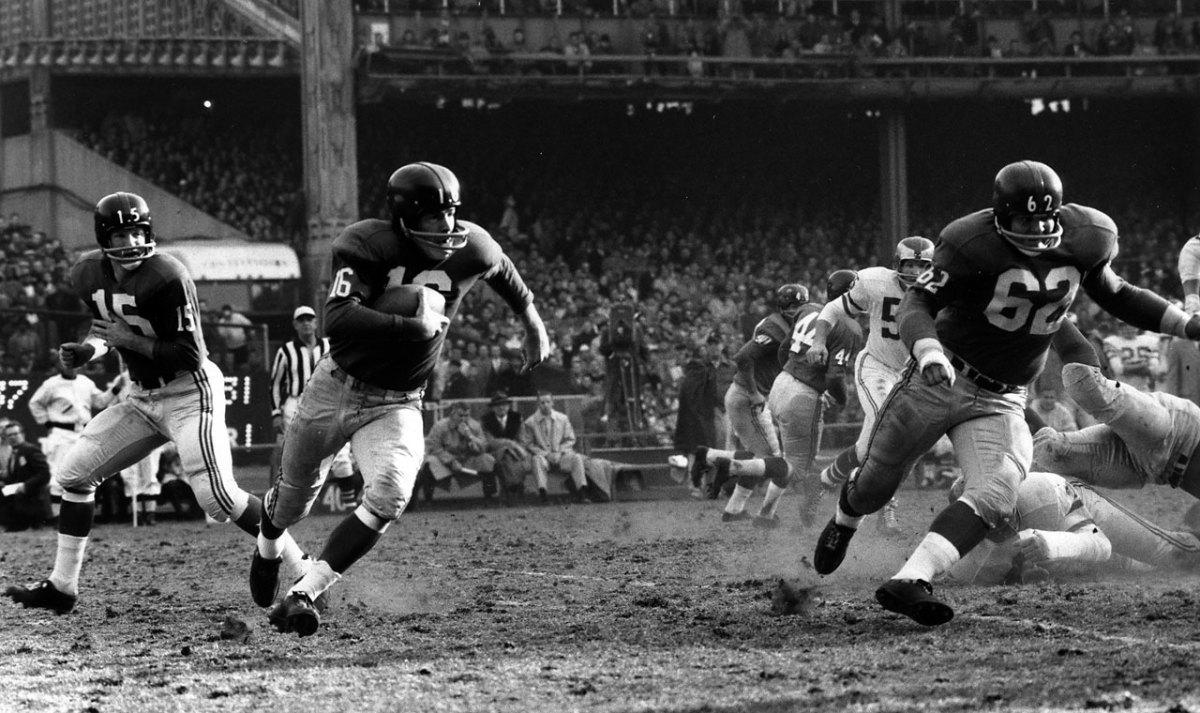
Running back Frank Gifford of the New York Giants runs behind teammate Darrell Dess during a game against the Philadelphia Eagles circa 1960's at Yankee Stadium. Gifford played running back, receiver and defensive back for the Giants in a career that spanned from 1952-1964.
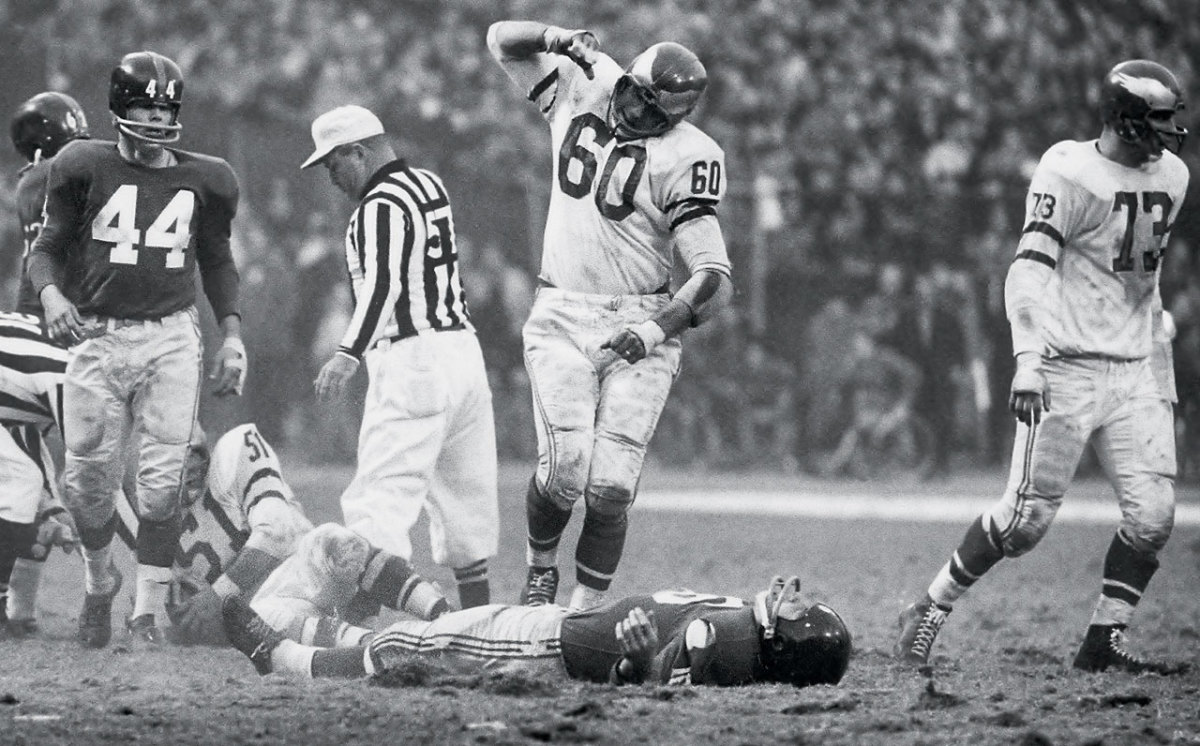
Frank Gifford lays motionless while Philadelphia Eagles linebacker Chuck Bednarik celebrates a hit that put the New York Giant out of a November 1960 game.
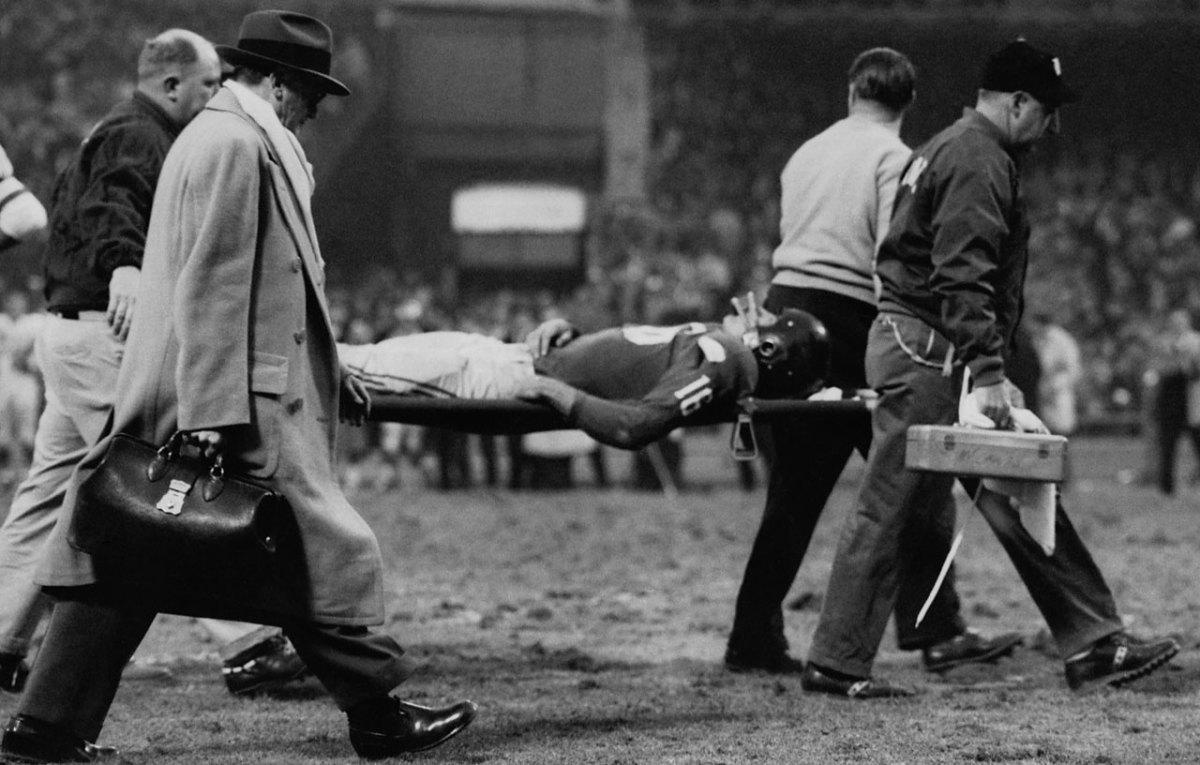
Gifford is taken from the field after being hit by Chuck Bednarik of the Philadelphia Eagle, to stop the last chance the New York Giants had of coming back and tying the score during a November 1960 game at Yankee Stadium. Gifford was knocked unconscious as the Eagles beat the Giants, 17-10.
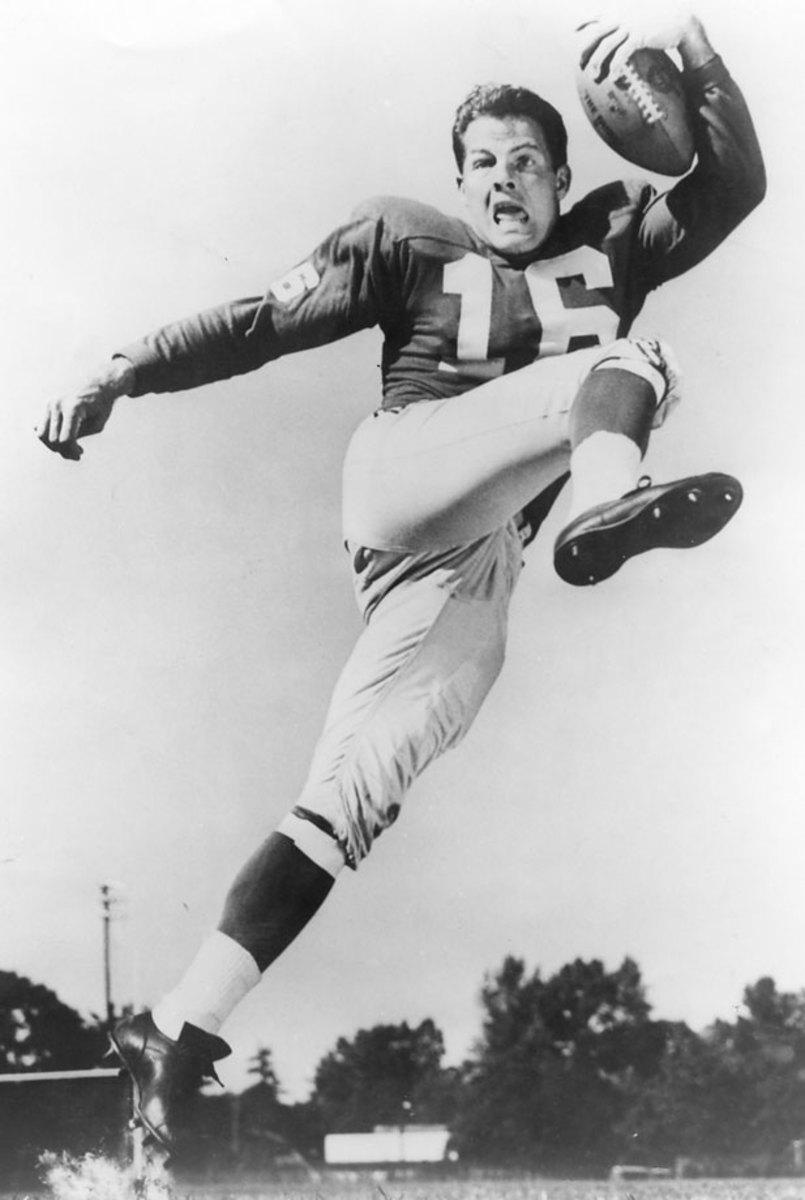
Frank Gifford, halfback of the University of Southern California Trojans, poses for a photo at the L.A. Memorial Coliseum.
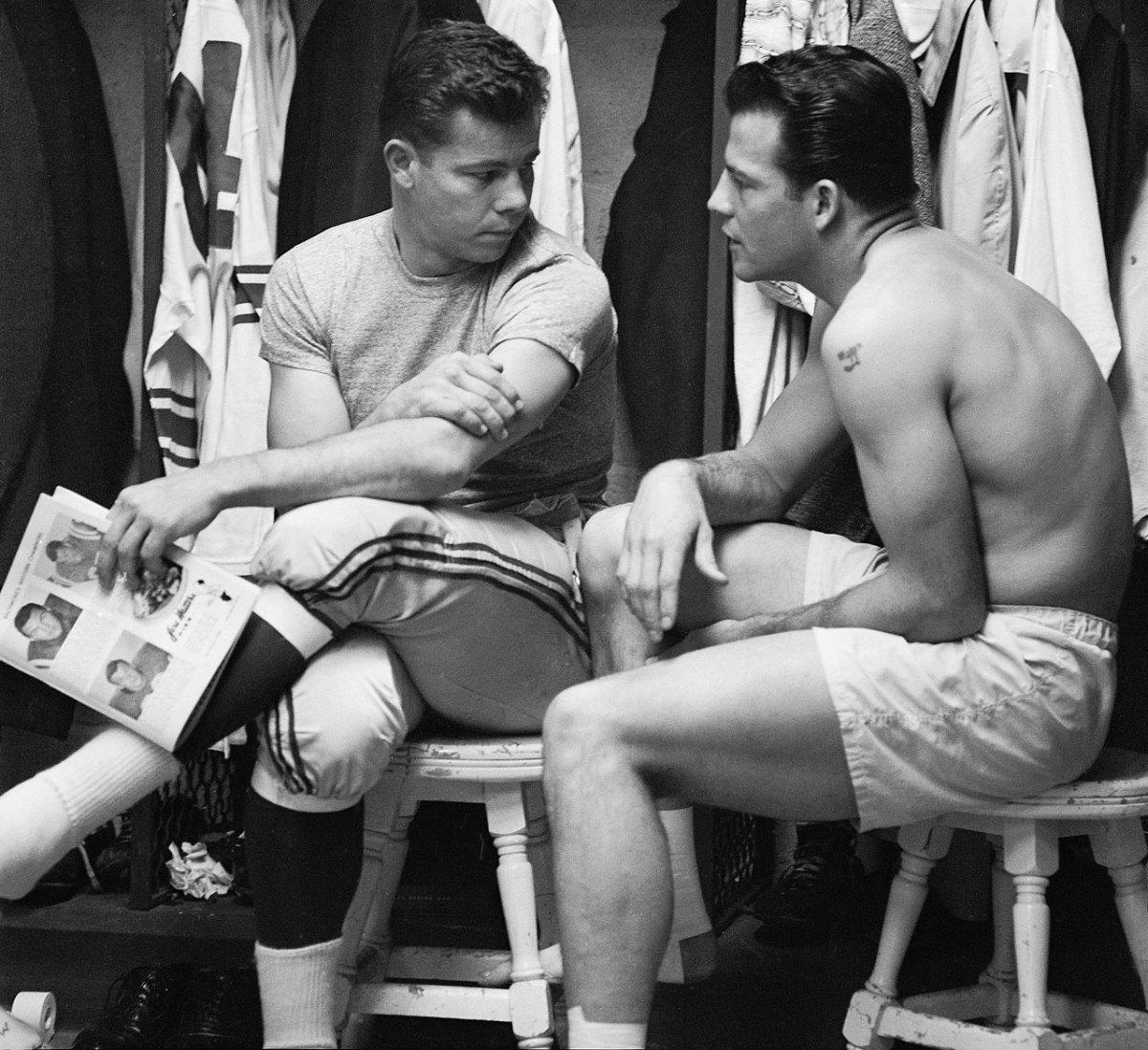
Kyle Rote, left, and Frank Gifford of the New York Giants chat in the locker room prior to the start of the NFL Championship Game, which the Giants ultimately lost to the Baltimore Colts, 1958.
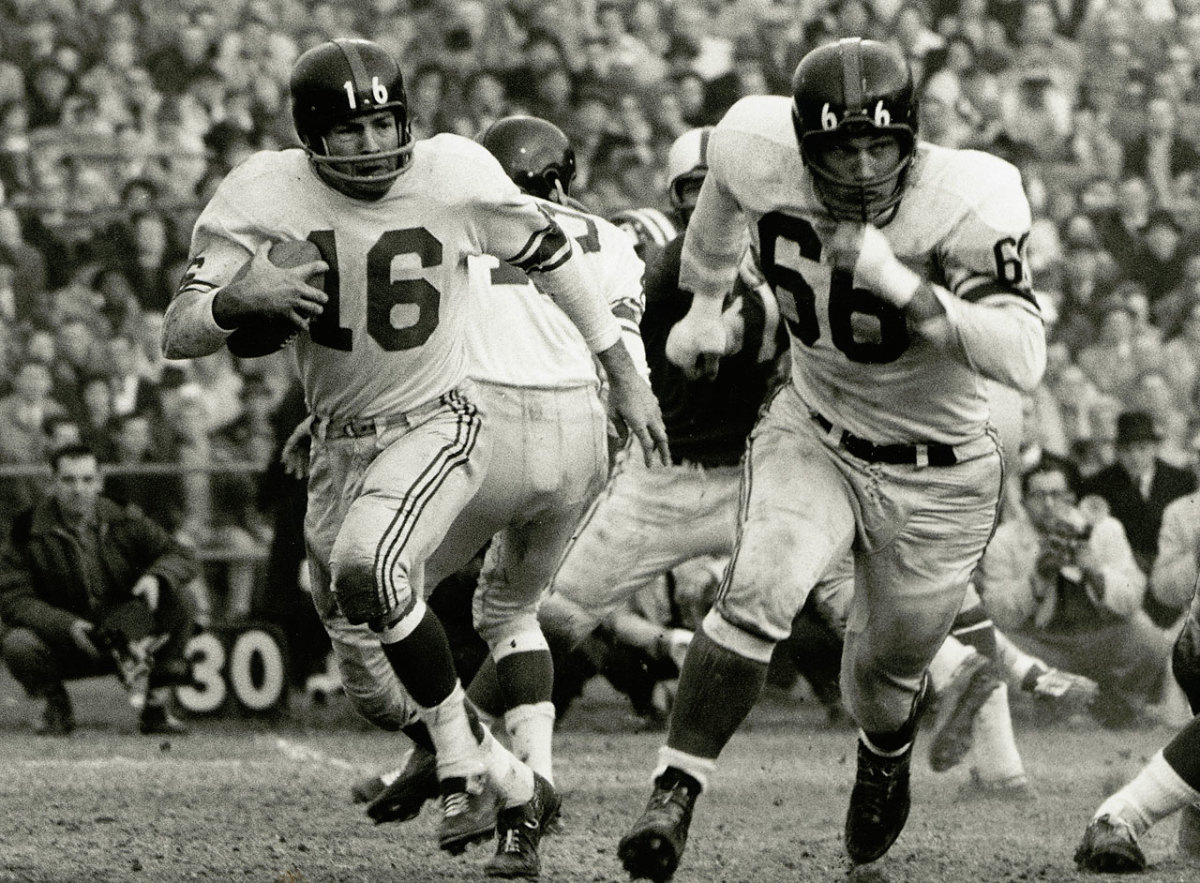
Gifford in action during the NFL Championship game against the Baltimore Colts at Memorial Stadium in 1959.
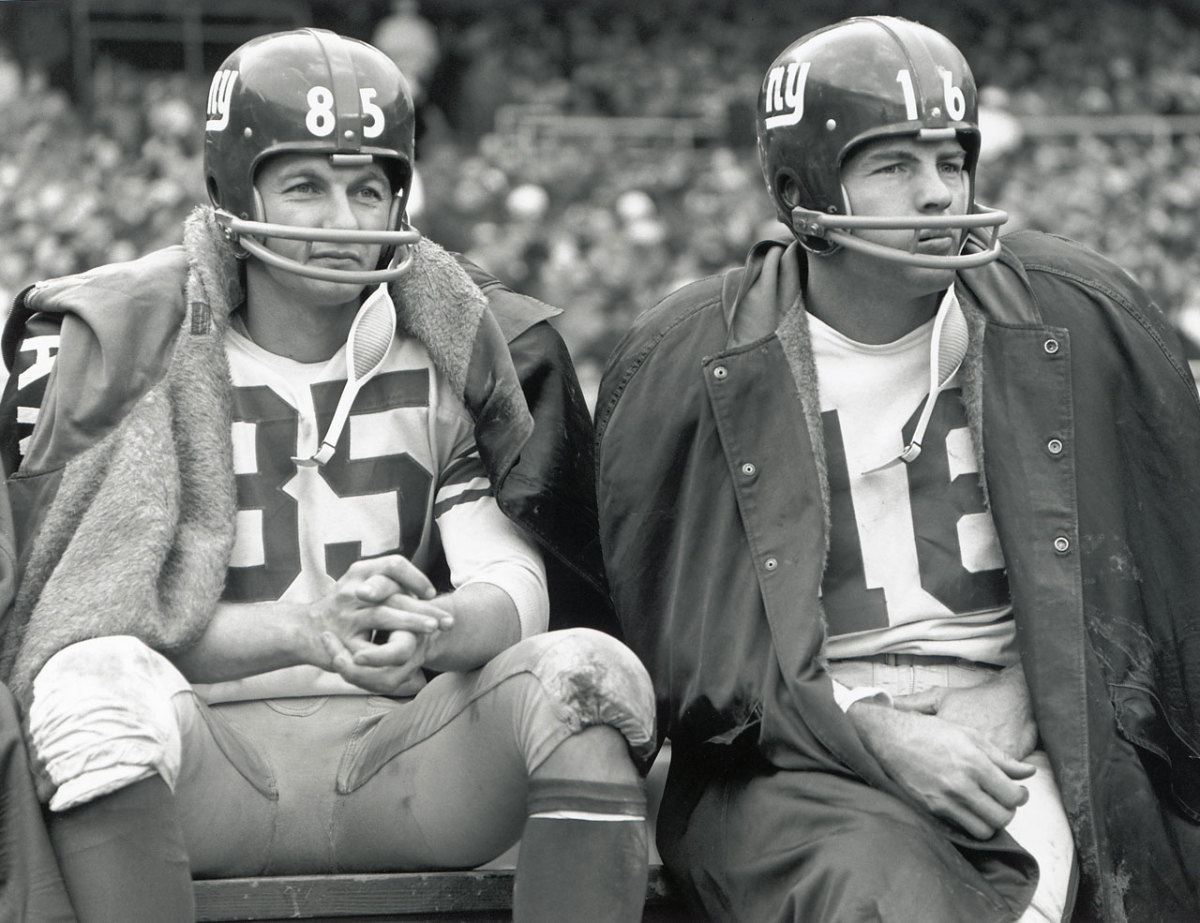
Del Shofnel, left, and Frank Gifford of the New York Giants sit on the bench during a game, circa 1962-64.
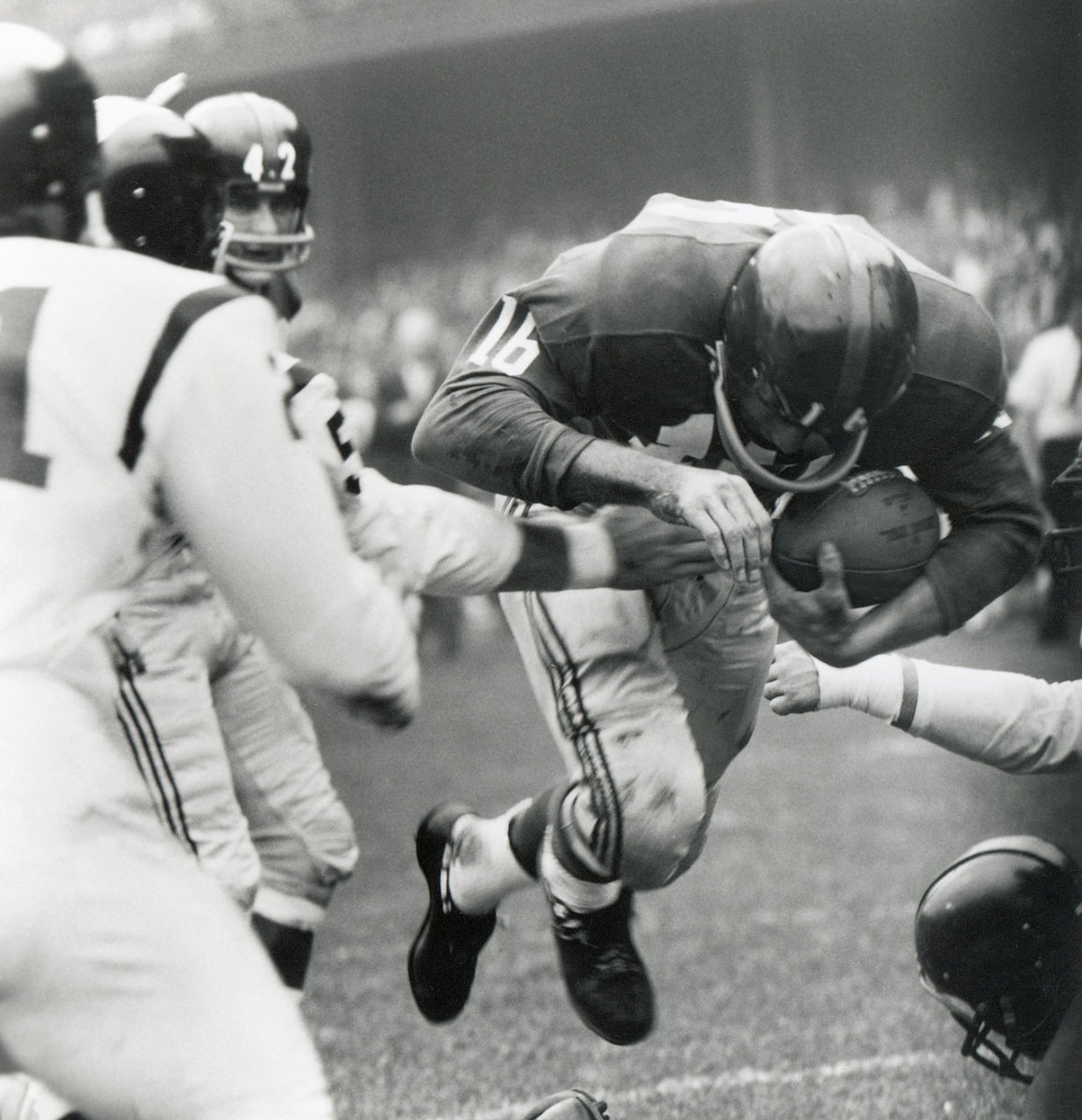
Frank Gifford scores a touchdown during a game against the Washington Redskins at Yankee Stadium in October 1960.
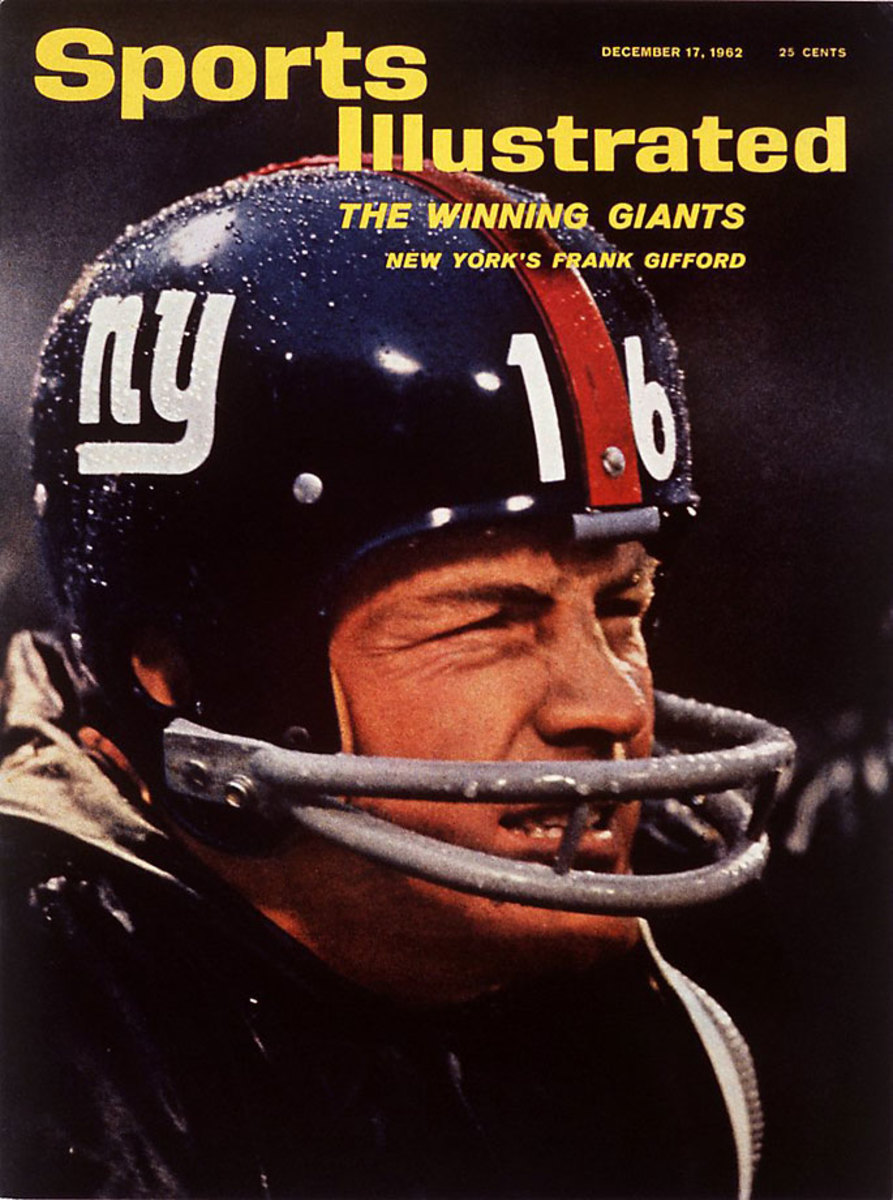
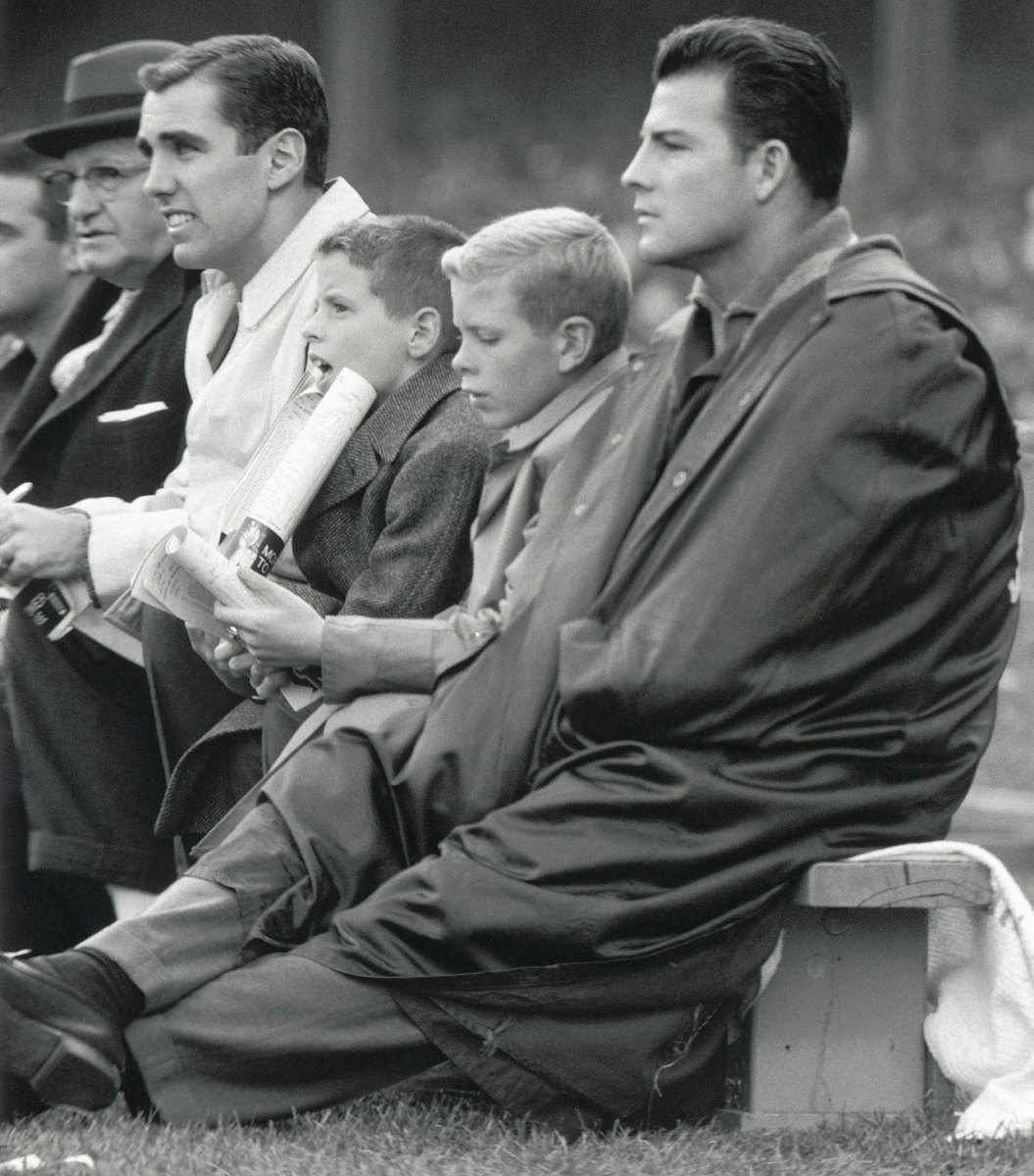
Frank Gifford watches from the bench during a 1959 game at Yankee Stadium.
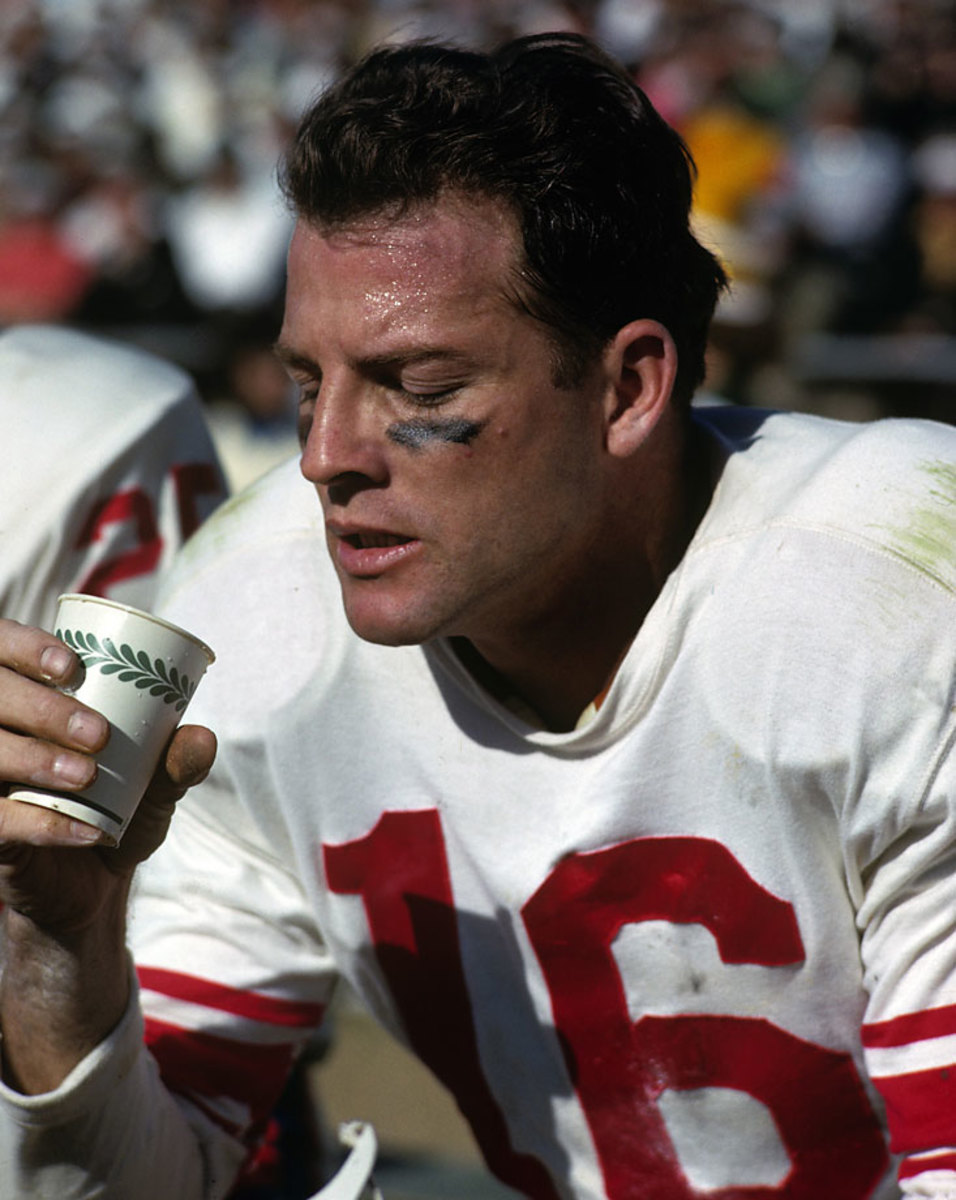
Gifford on the sidelines during a 1962 game against the Dallas Cowboys at Cotton Bowl Stadium.
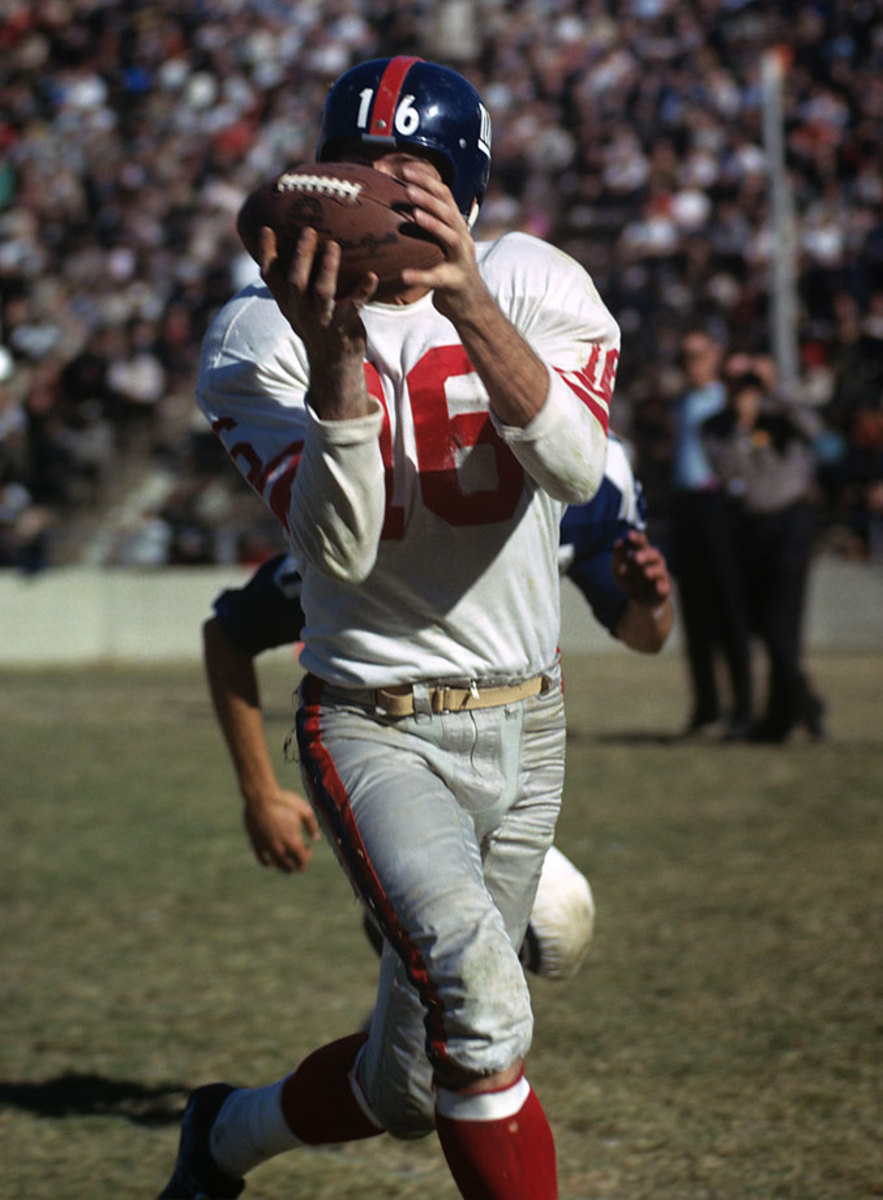
Gifford makes a catch against the Dallas Cowboys in 1962.
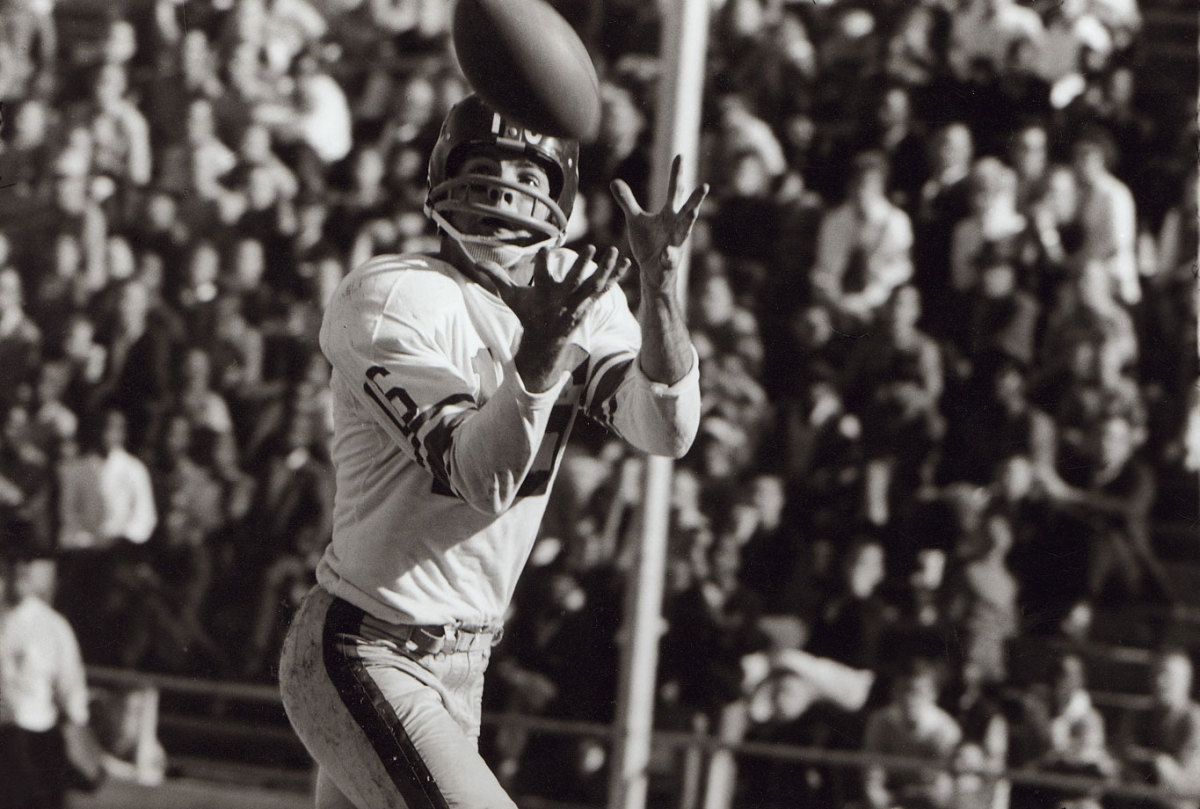
Gifford attempts to make a catch against the Dallas Cowboys.
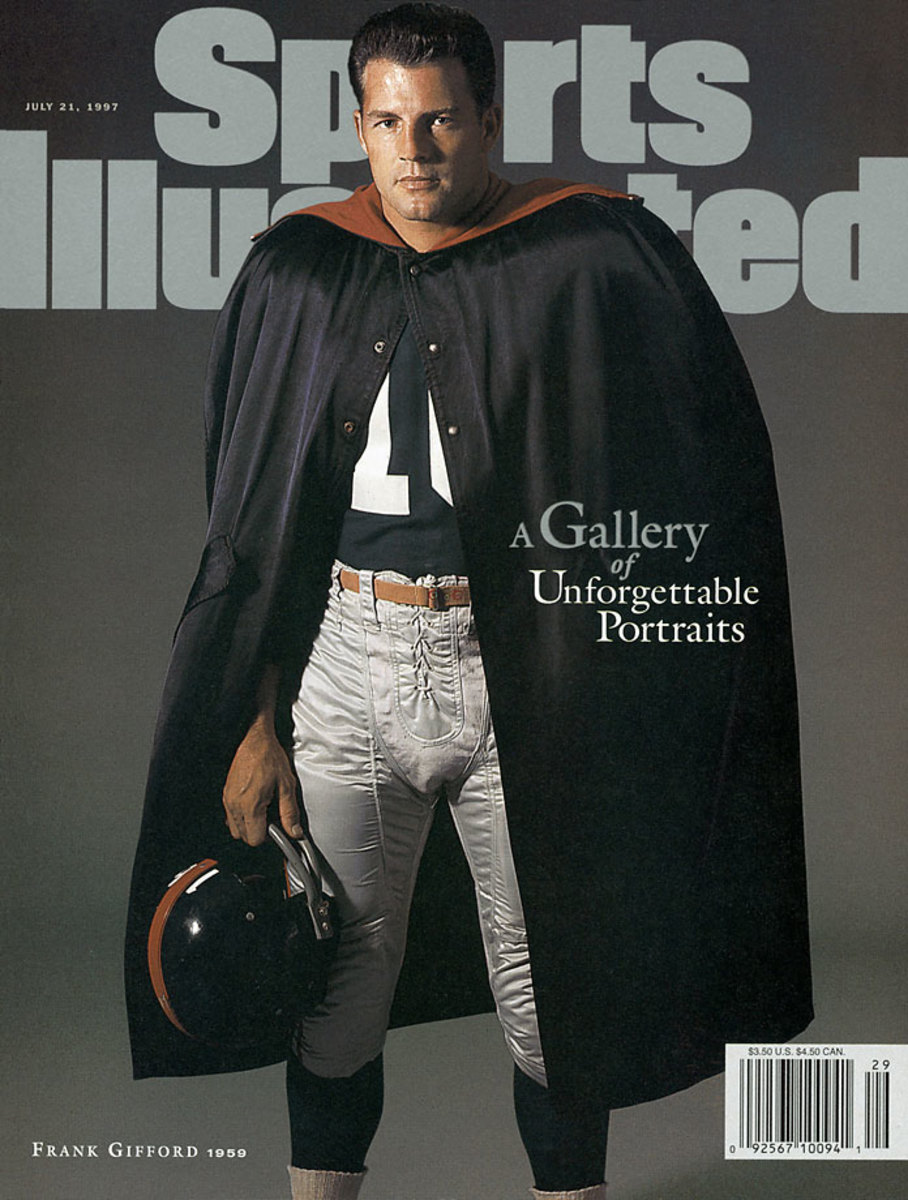
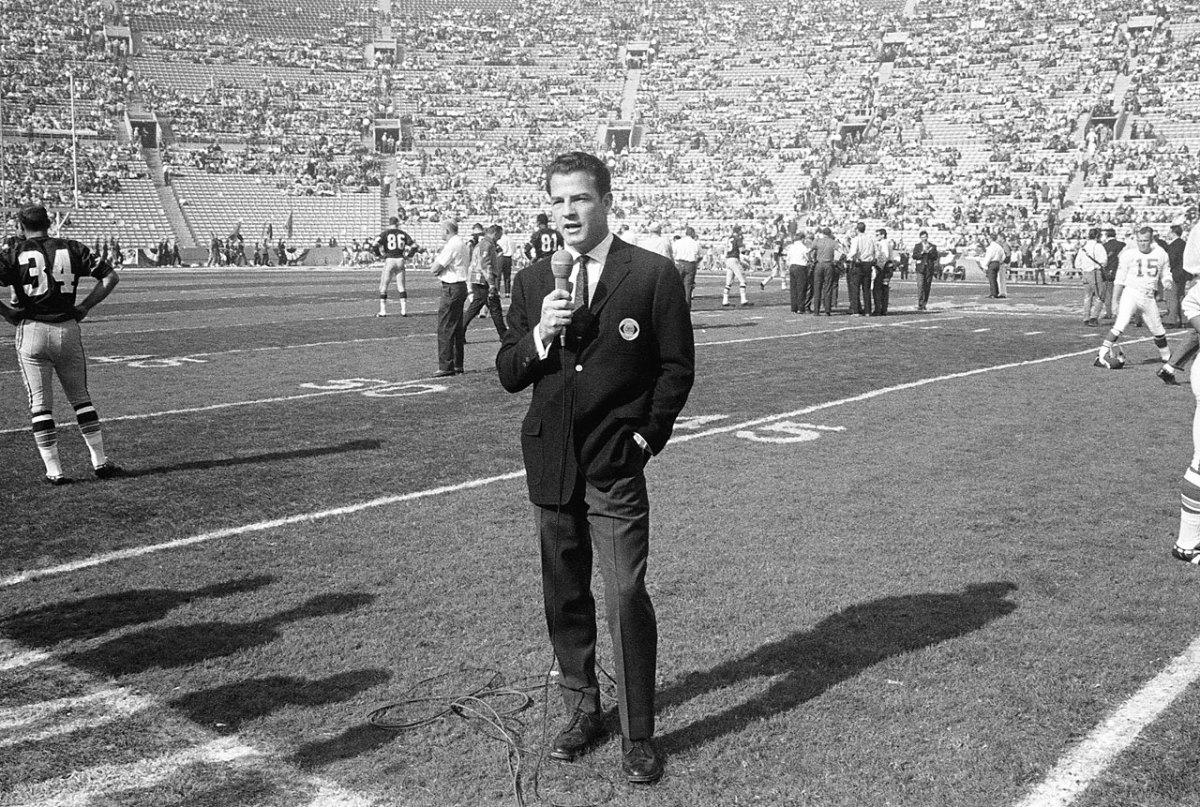
Gifford at the First World Championship Game, AFL vs. NFL, later known as Super Bowl I, at the Los Angeles Memorial Coliseum in 1967.
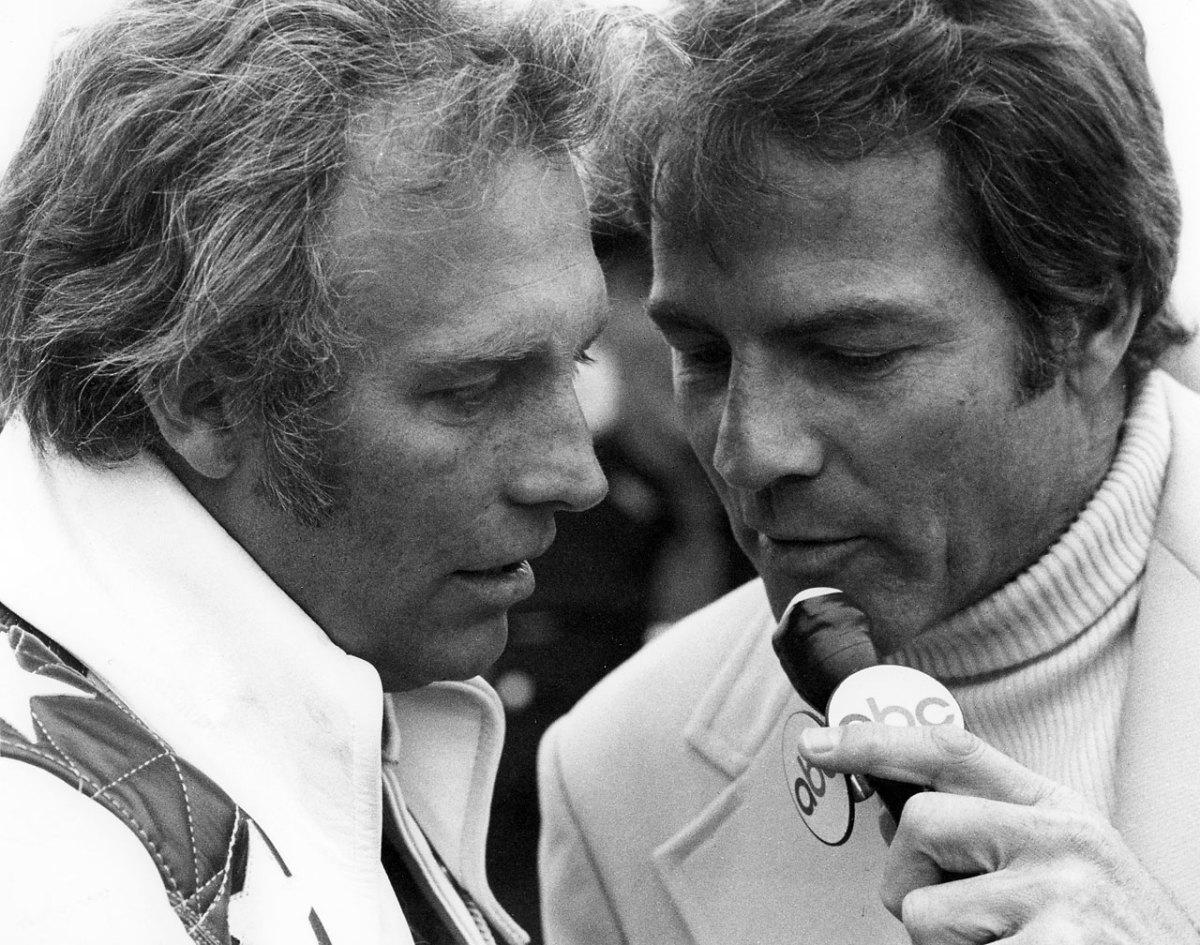
Gifford interviews Evel Knievel on the Wide World of Sports in 1976.
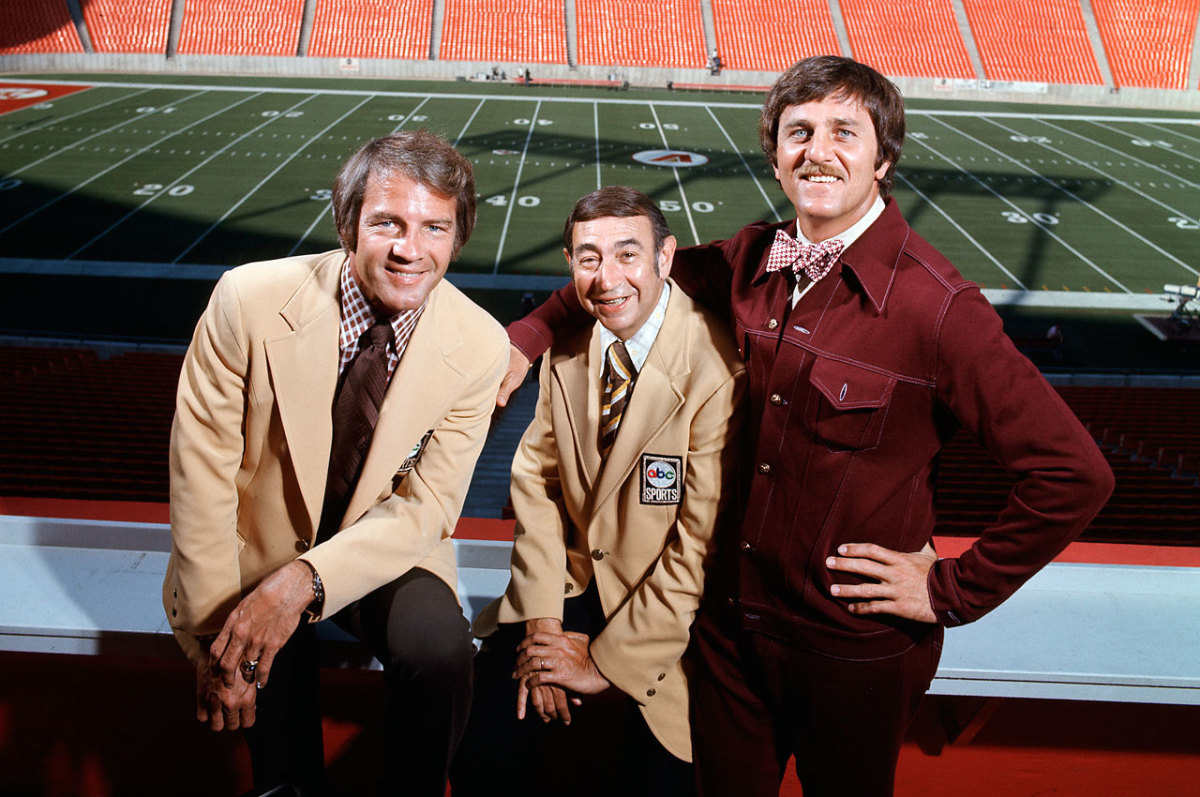
Frank Gifford, Howard Cosell and Don Meredith in 1971.
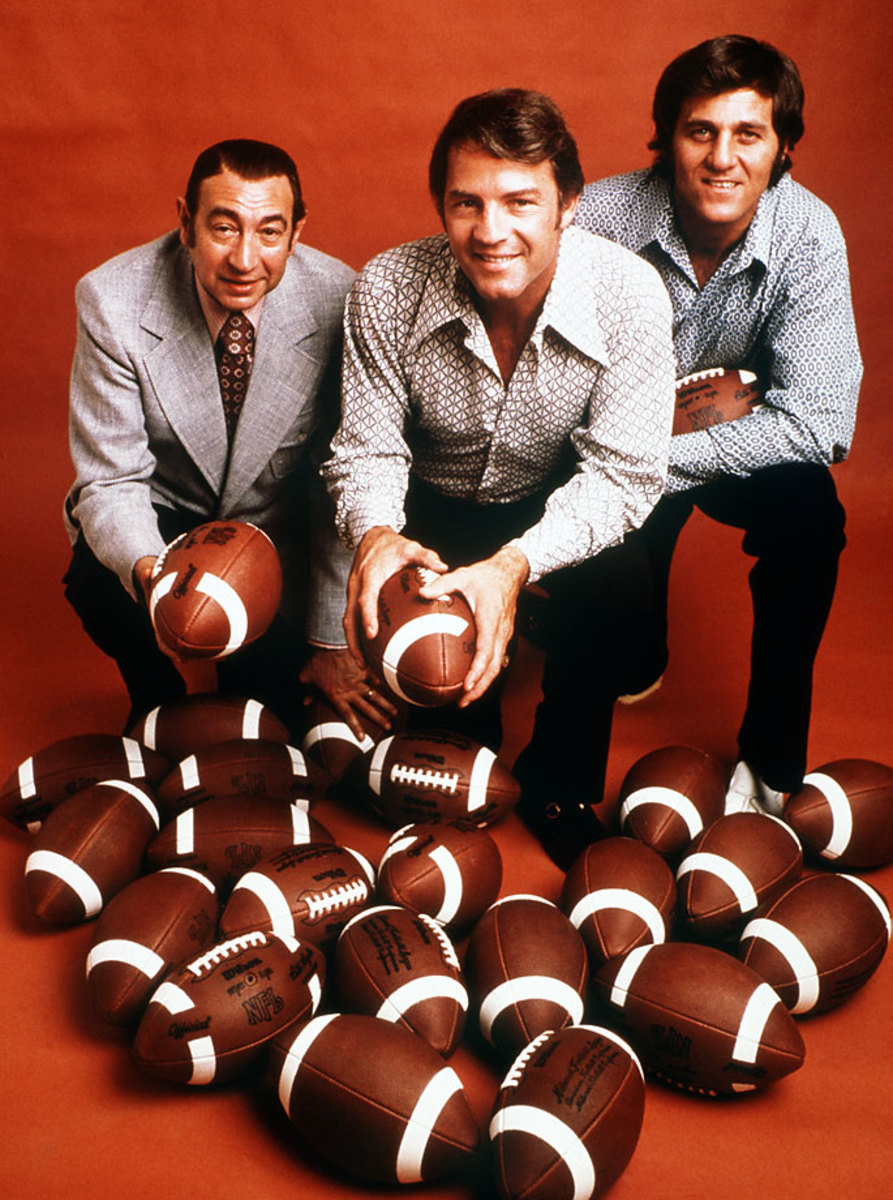
Howard Cosell, Frank Gifford and Don Meredith in 1971.
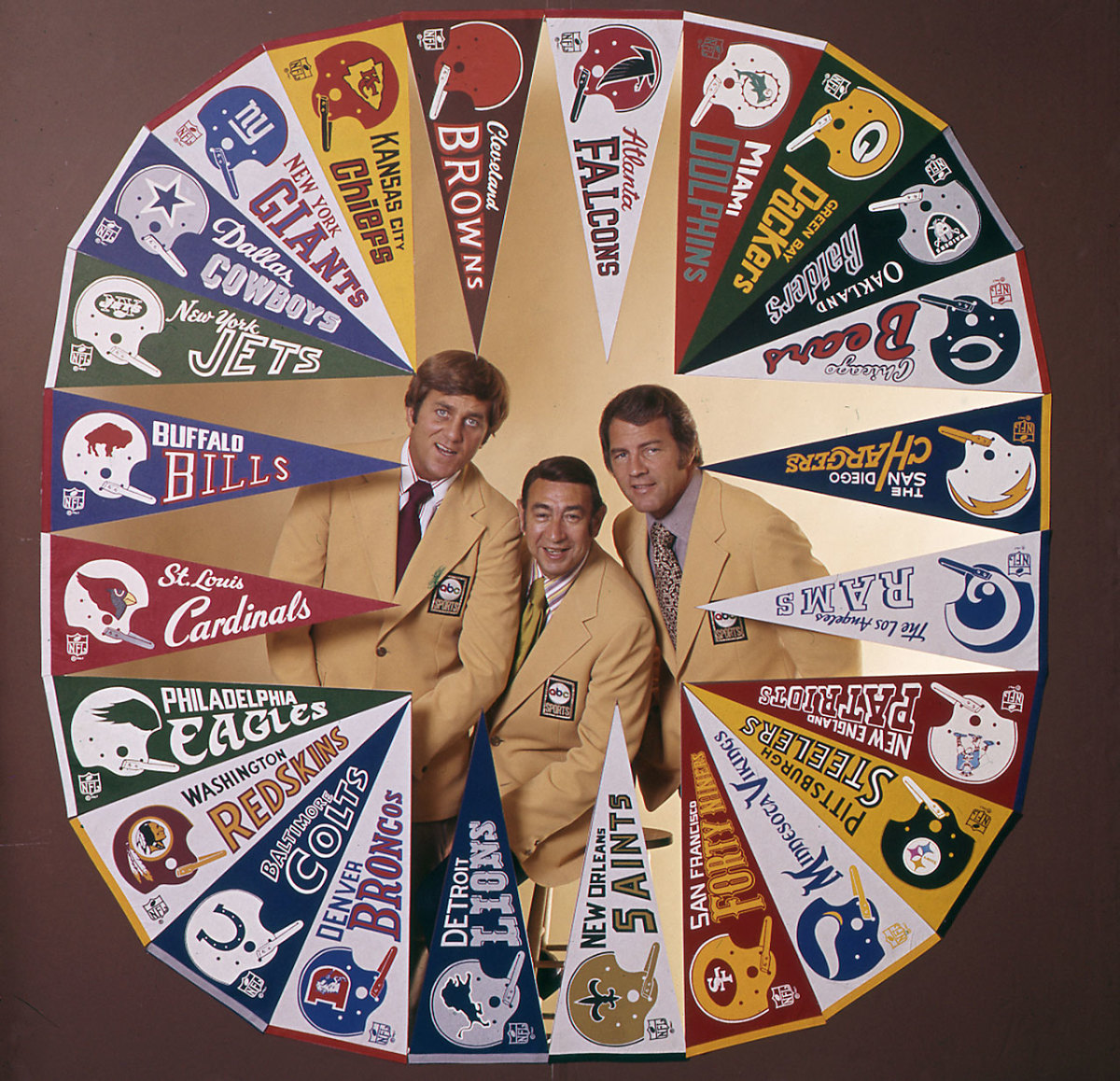
Don Meredith, Howard Cosell and Frank Gifford in 1974.
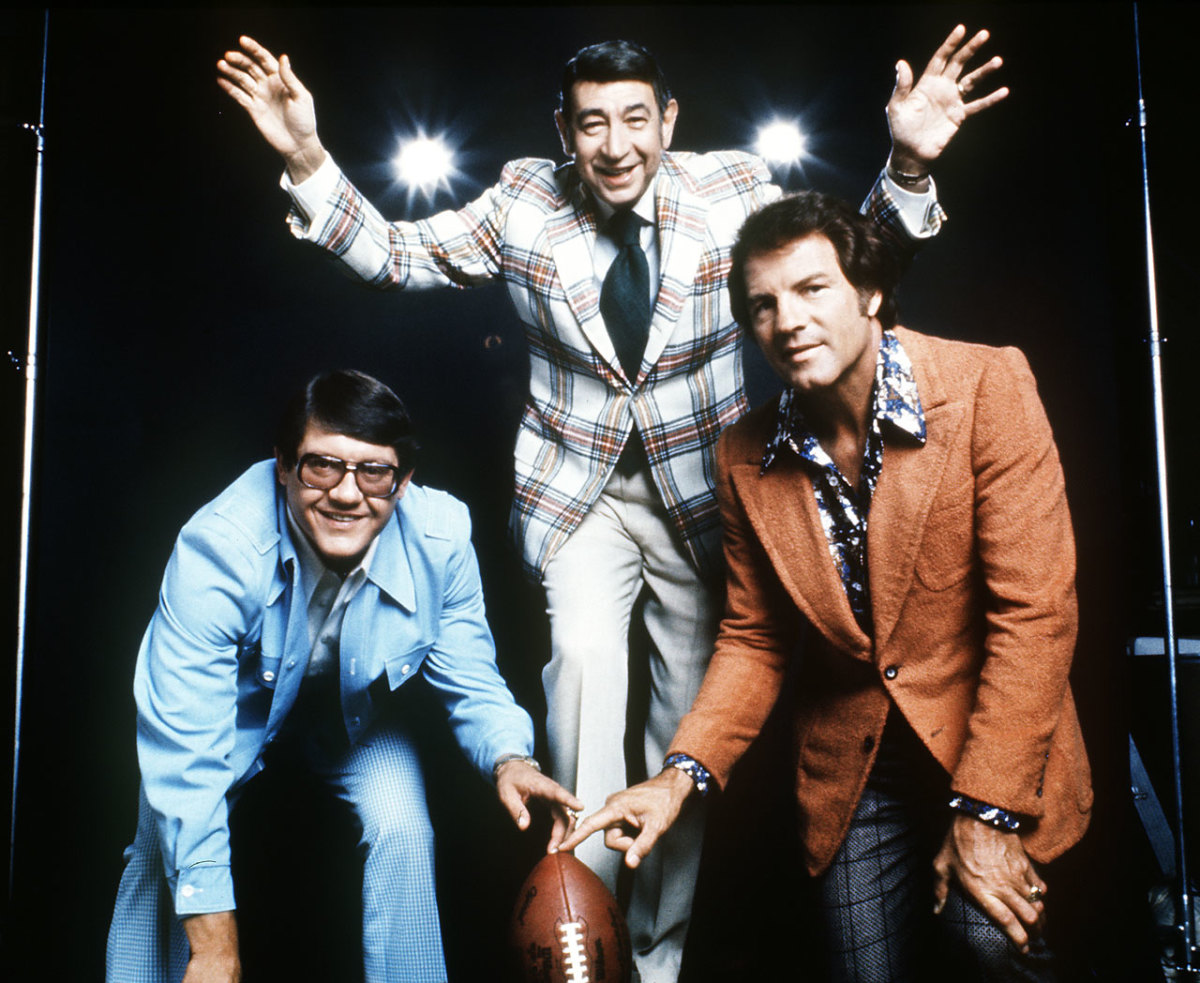
NFL commentators Alex Karras, Howard Cosell and Frank Gifford in 1975.
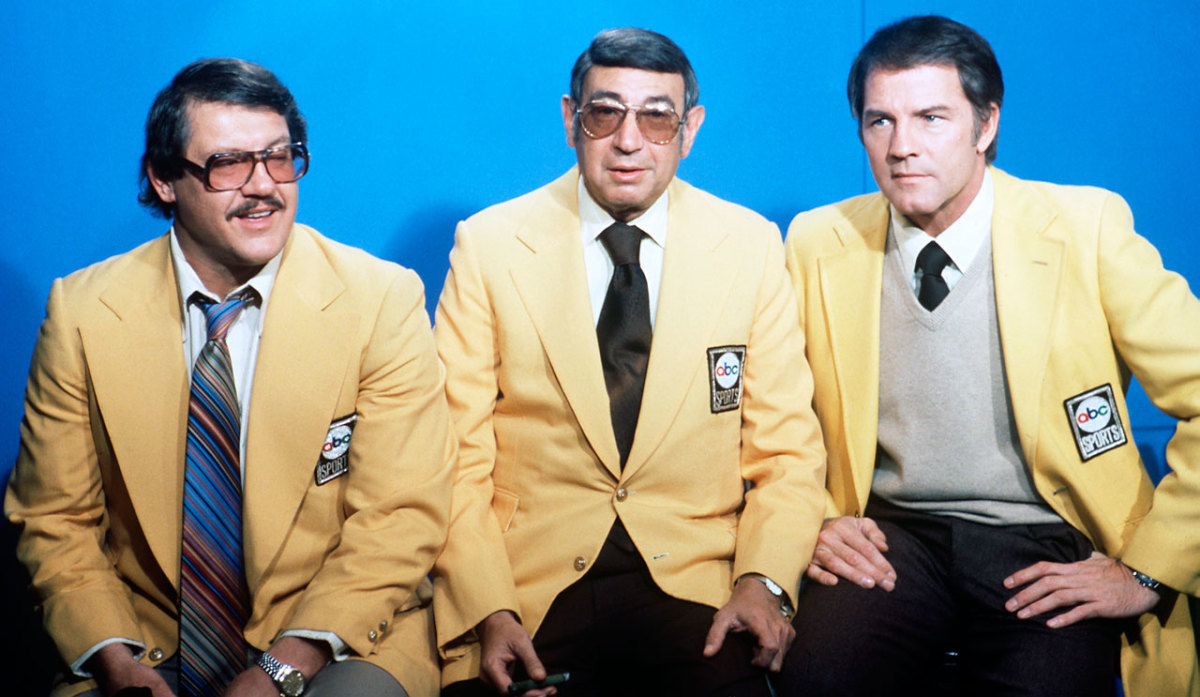
Alex Karras, Howard Cosell and Frank Gifford in 1976.
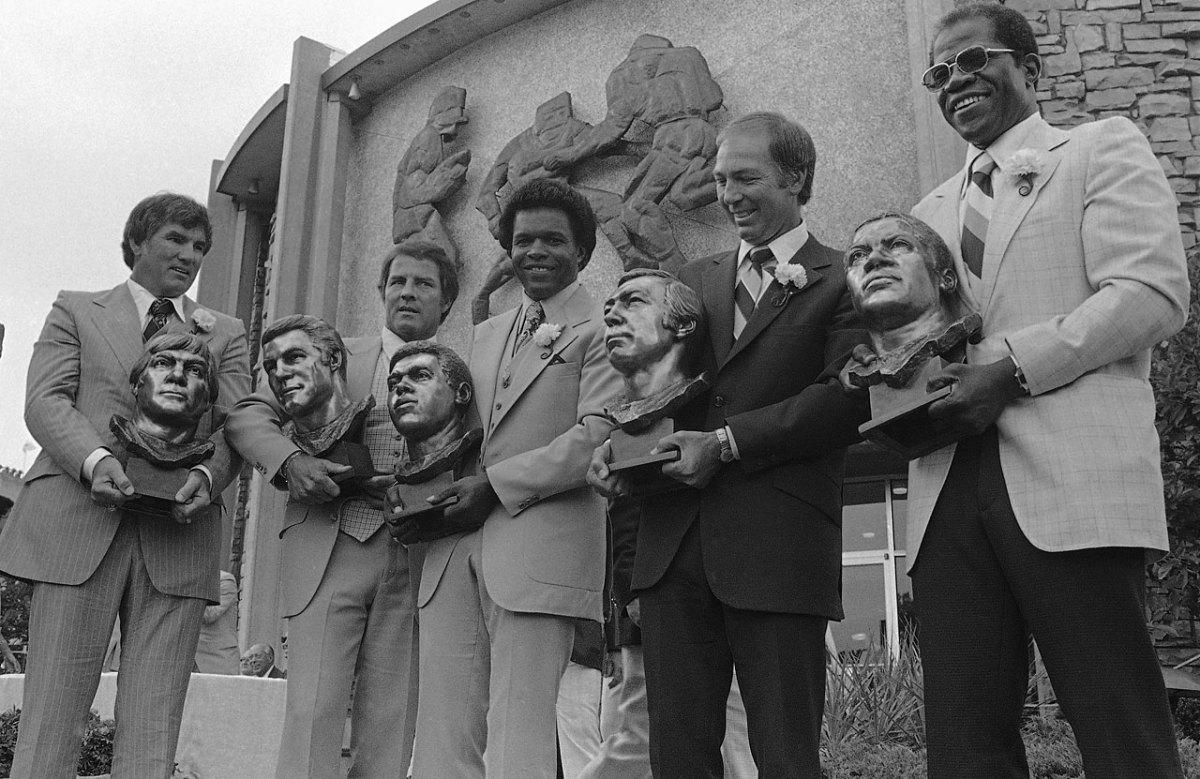
Forrest Gregg, Frank Gifford, Gale Sayers, Bart Starr and Bill Willis pose after the 1977 Pro Football Hall of Fame induction ceremonies in Canton, Ohio.
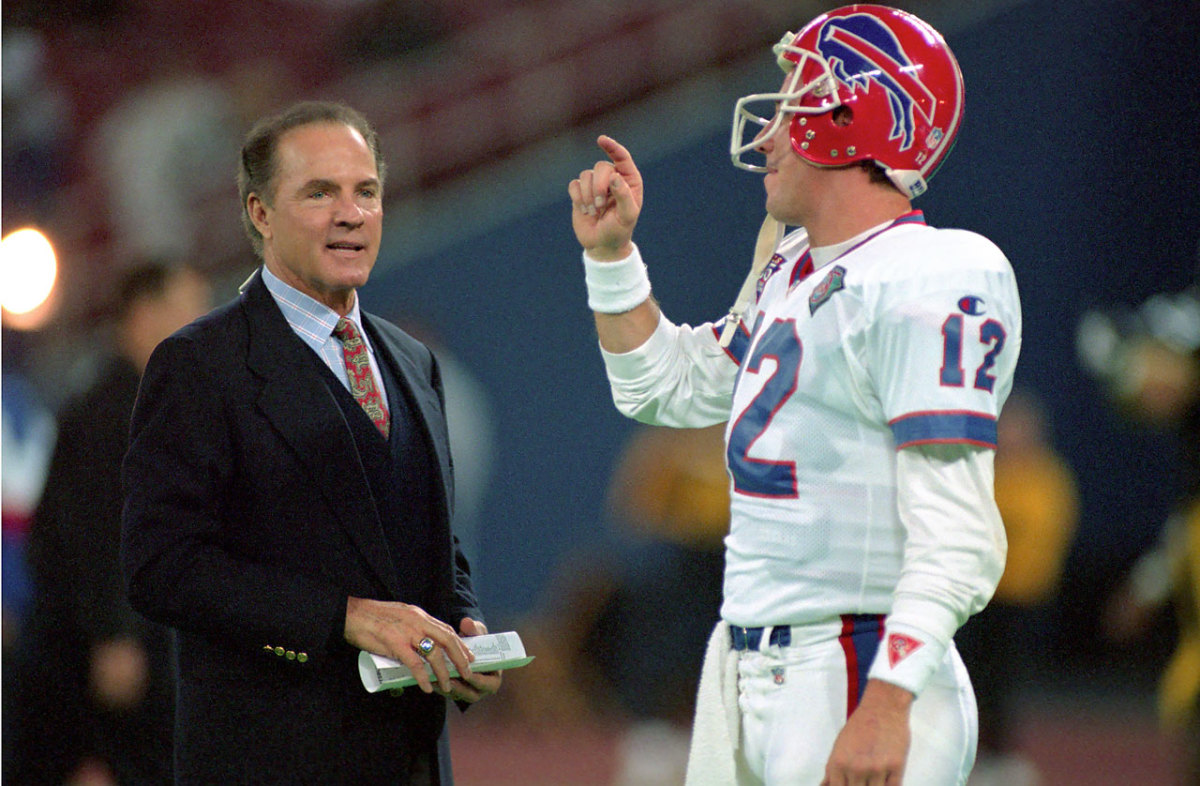
Frank Gifford talks with quarterback Jim Kelly of the Buffalo Bills before a game against the Pittsburgh Steelers at Three Rivers Stadium in November 1994.
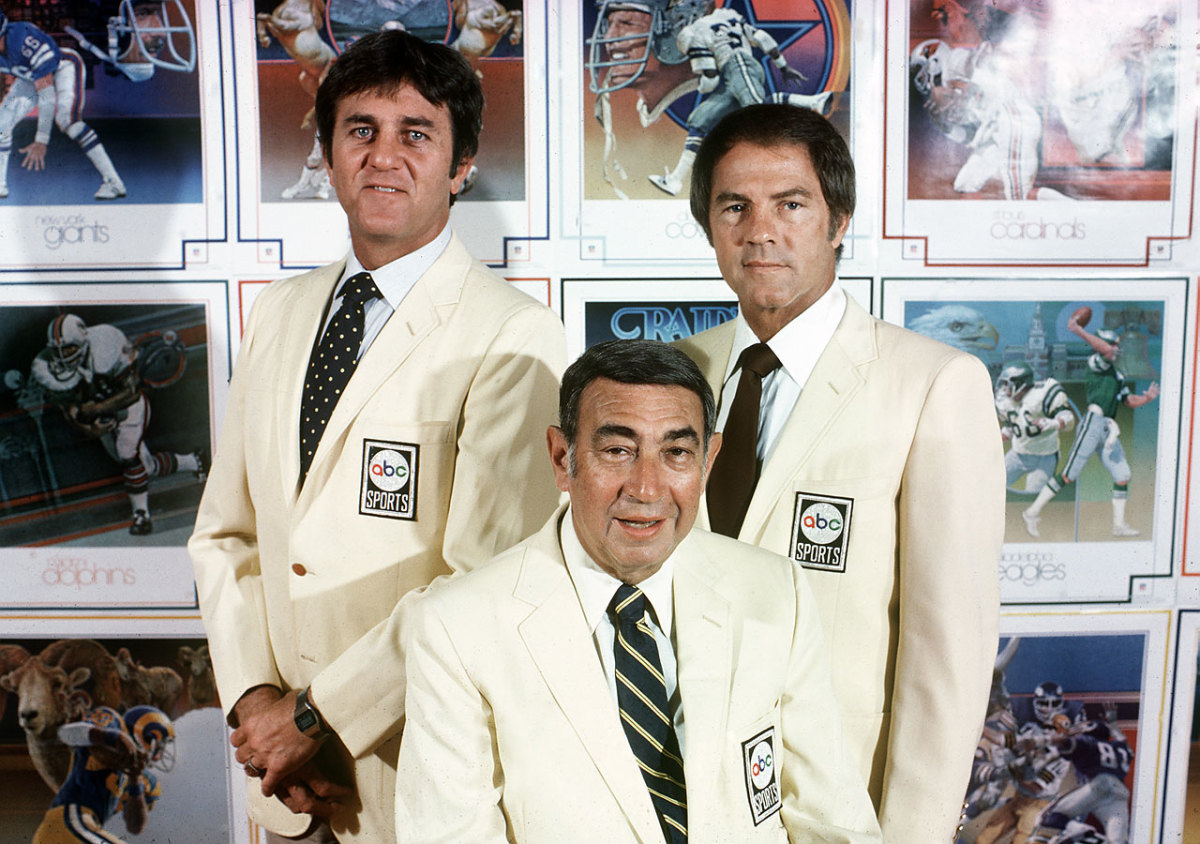
Don Meredith, Howard Cosell and Frank Gifford in 1980.
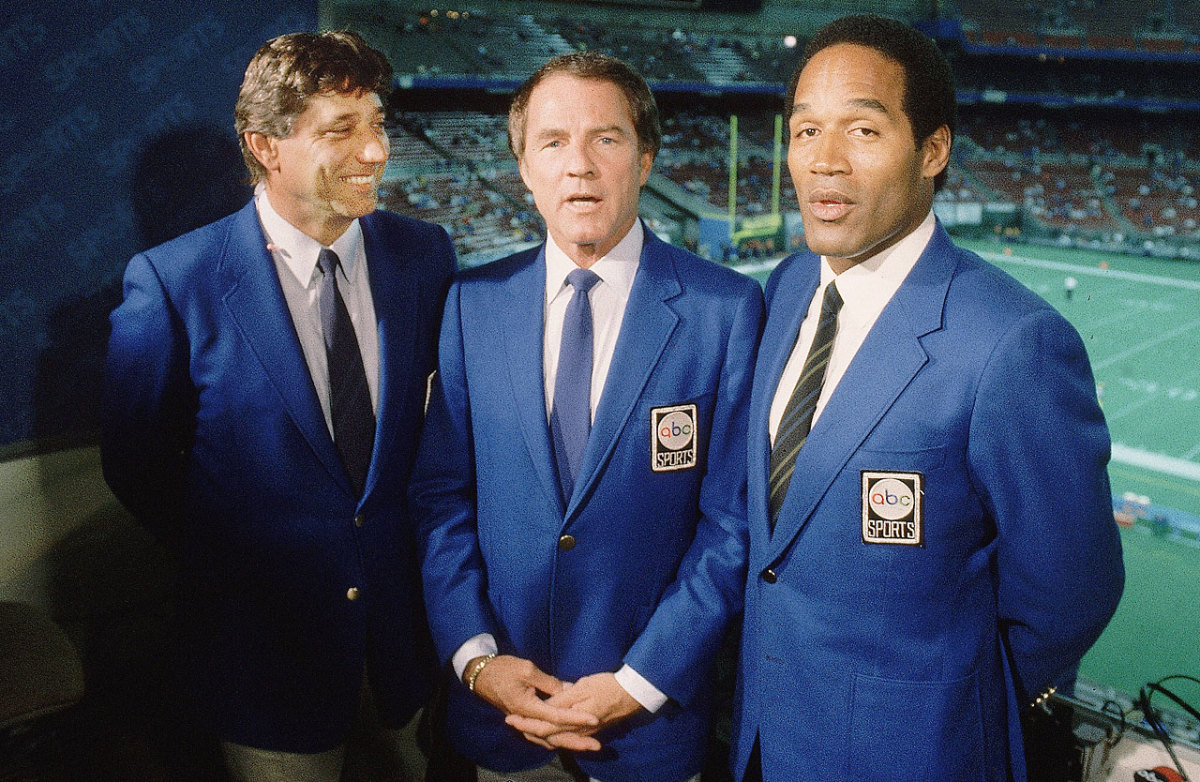
Joe Namath, Frank Gifford and O.J. Simpson in the booth in 1985.
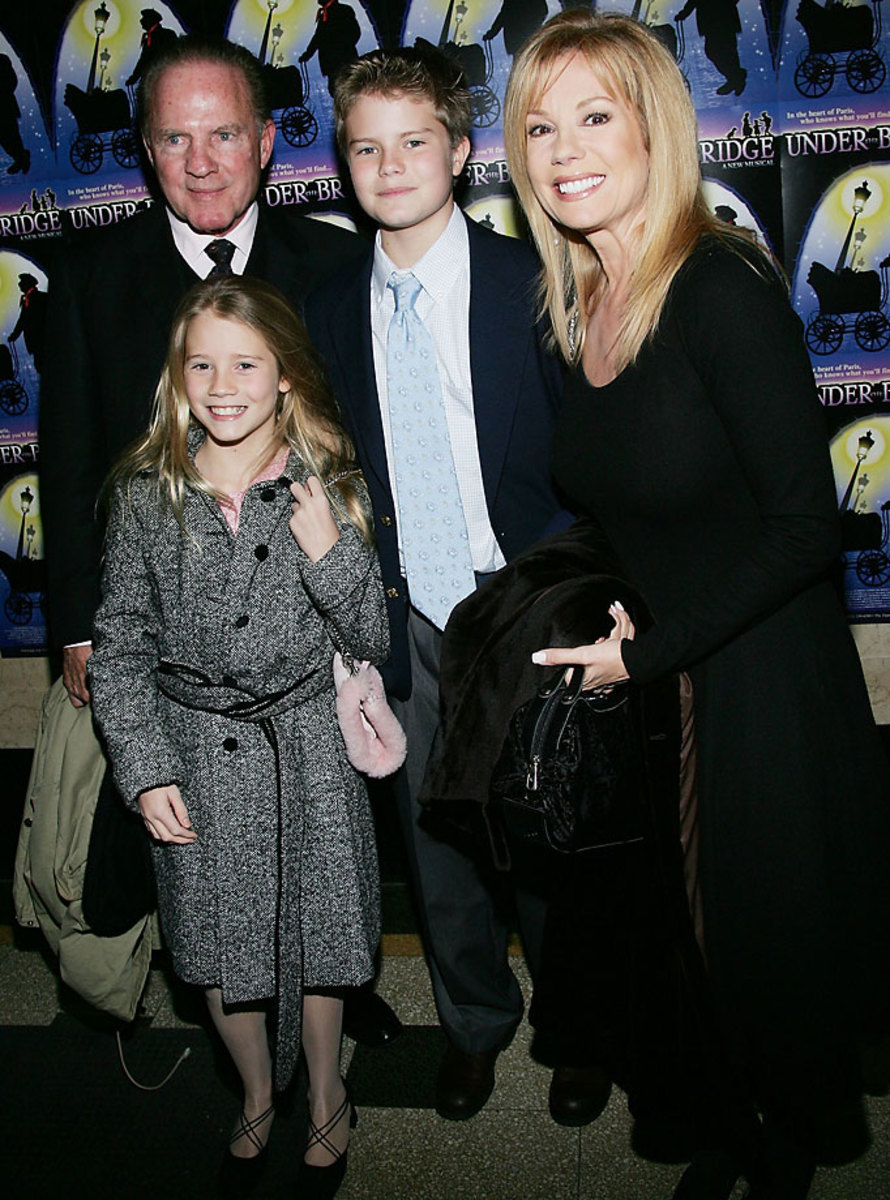
Frank Gifford with wife Kathie Lee and children Cody and Cassidy at the opening night of her Kathlie Lee's musical "Under The Bridge" in January 2005.
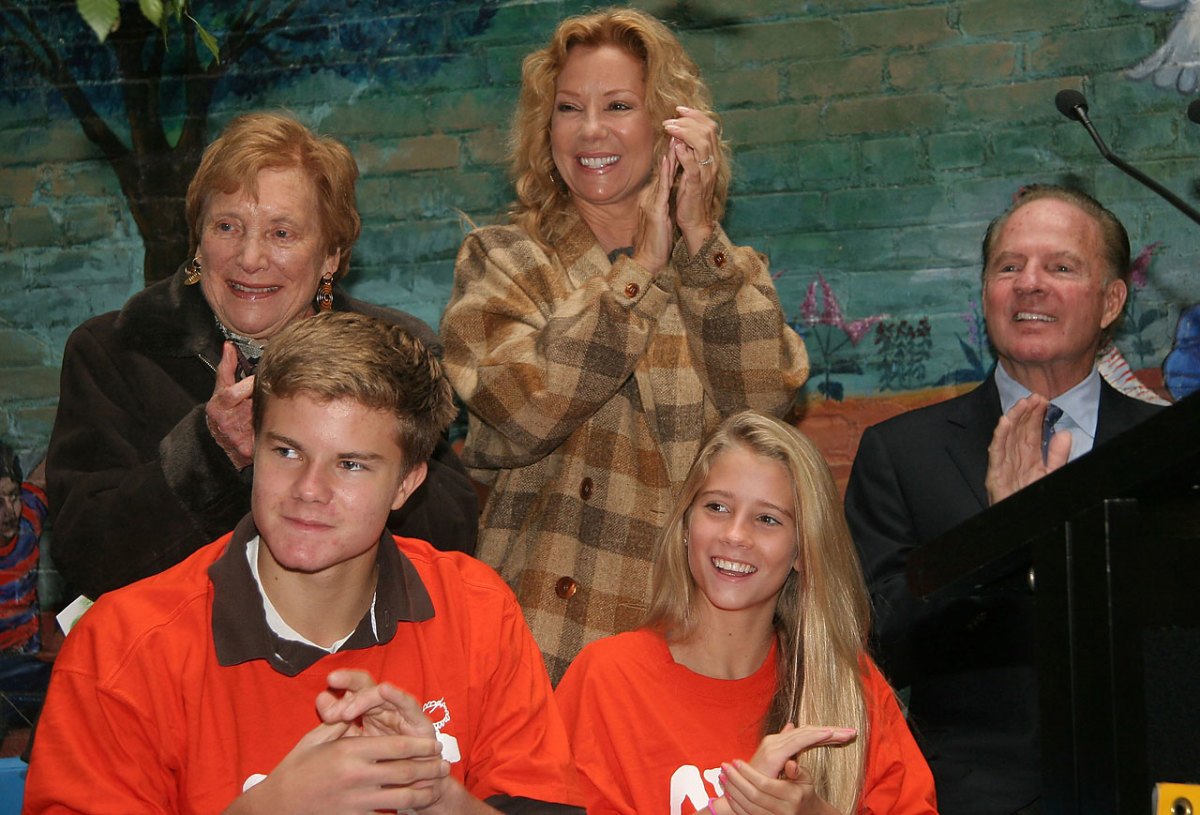
Virginia Sloane, from Heckscher Foundation for Children, Kathie Lee Gifford, Frank Gifford, Cody Gifford and Cassidy Gifford attend the unveiling of a new variety Cody Gifford House Program and Playground in October 2007 in New York City.
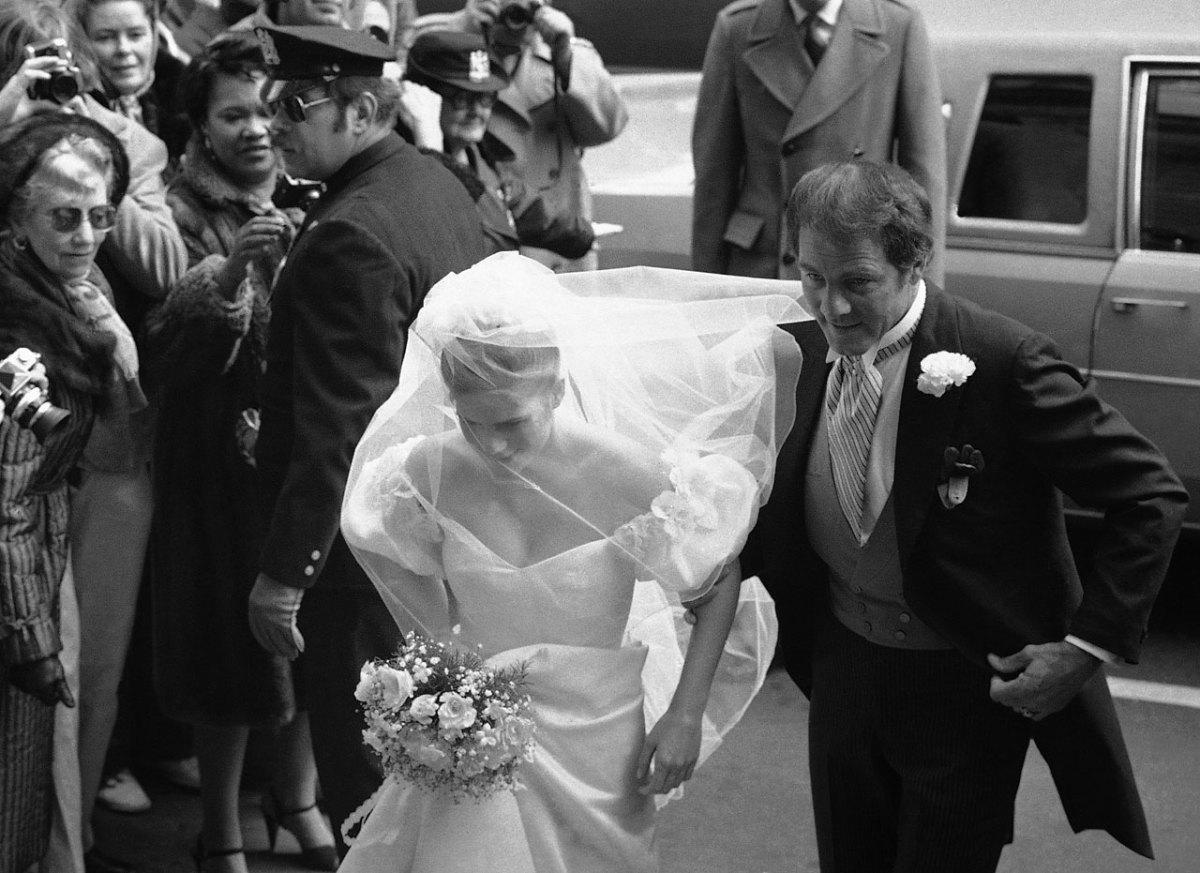
Frank Gifford escorts his daughter Vicki into New York’s St. Ignatius Loyola Catholic Church onMarch 14, 1981, for her wedding with Michael Kennedy, son of the late Sen. Robert Kennedy.
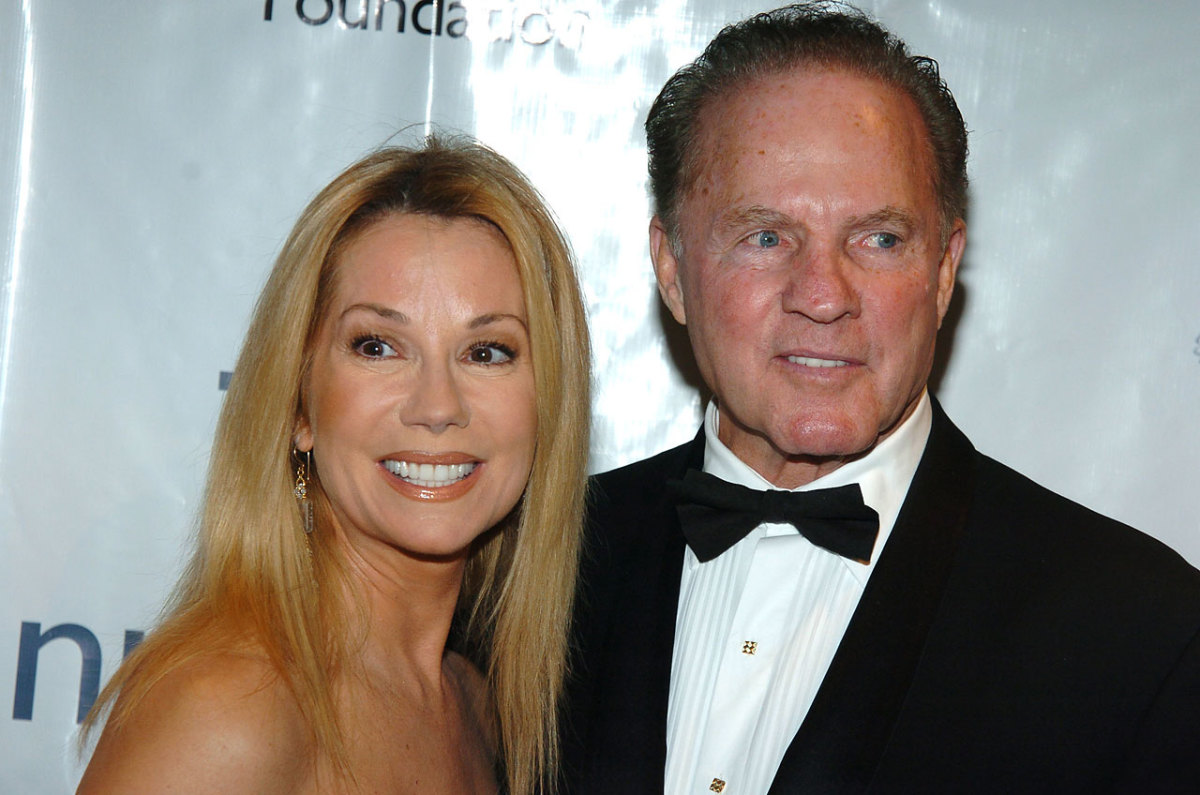
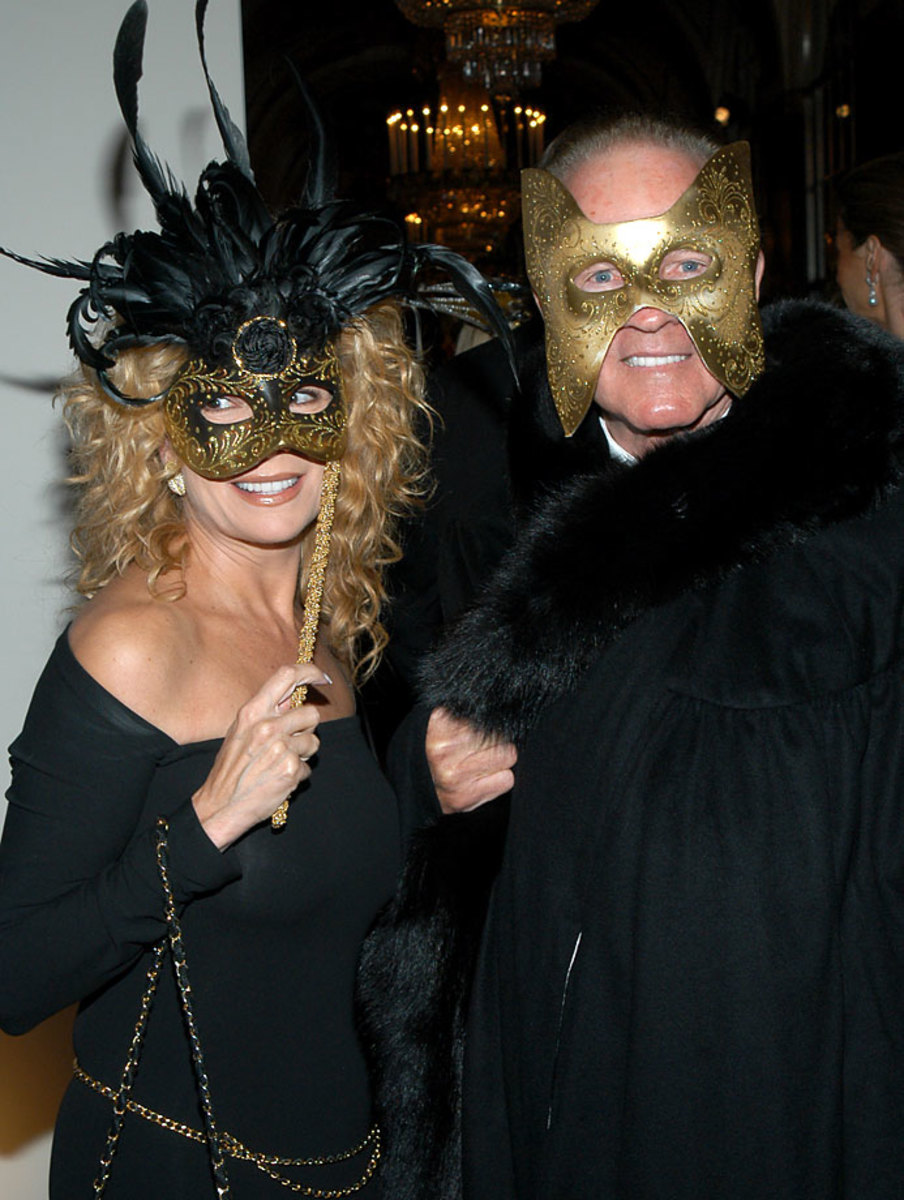
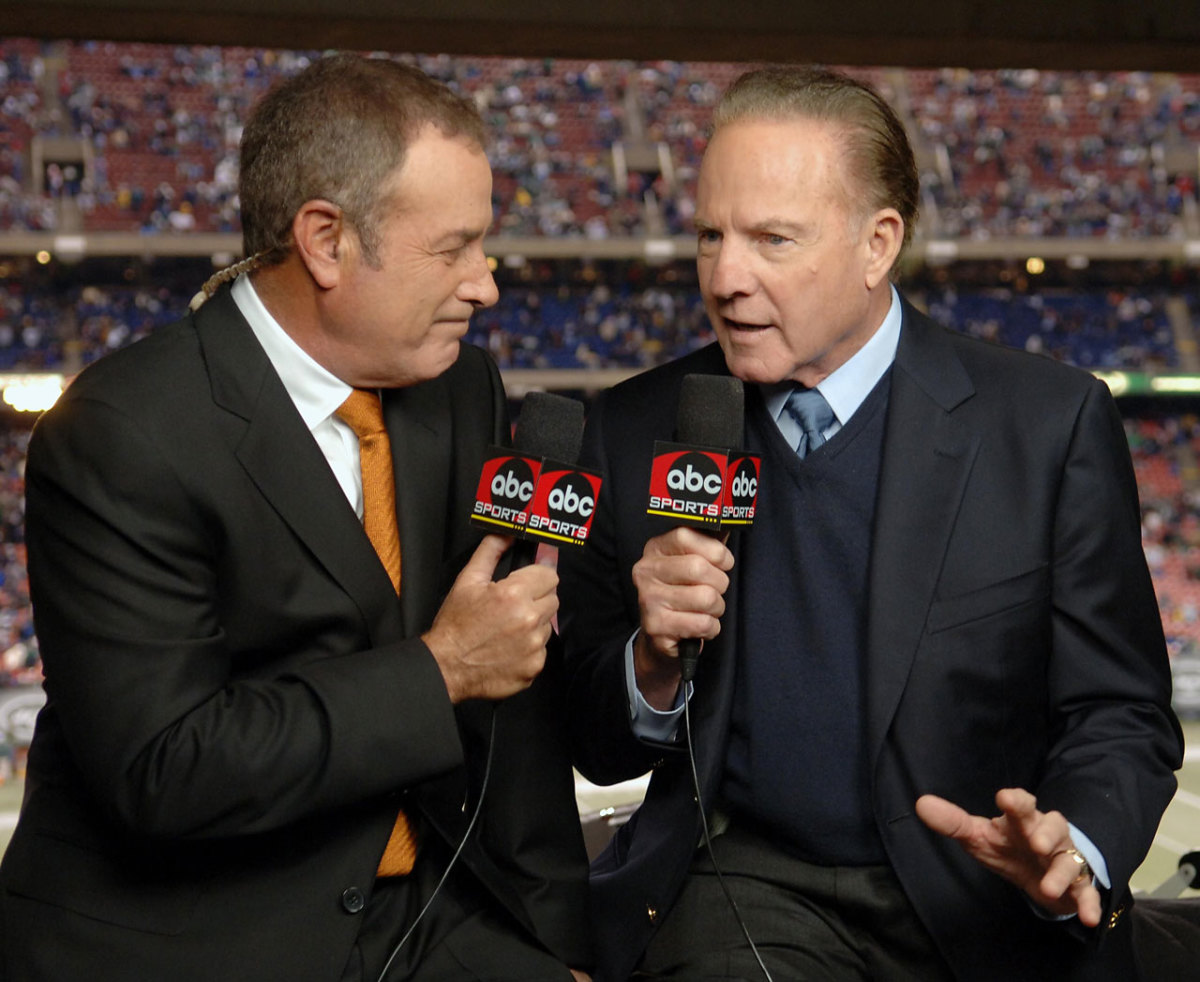
Al Michaels, left, and his former 'Monday Night Football' announcing partner Frank Gifford talk over their experiences at halftime of the last ABC Monday Night Football game telecast, between the New England Patriots and the New York Jets, at Giants Stadium on Dec. 26, 2005.
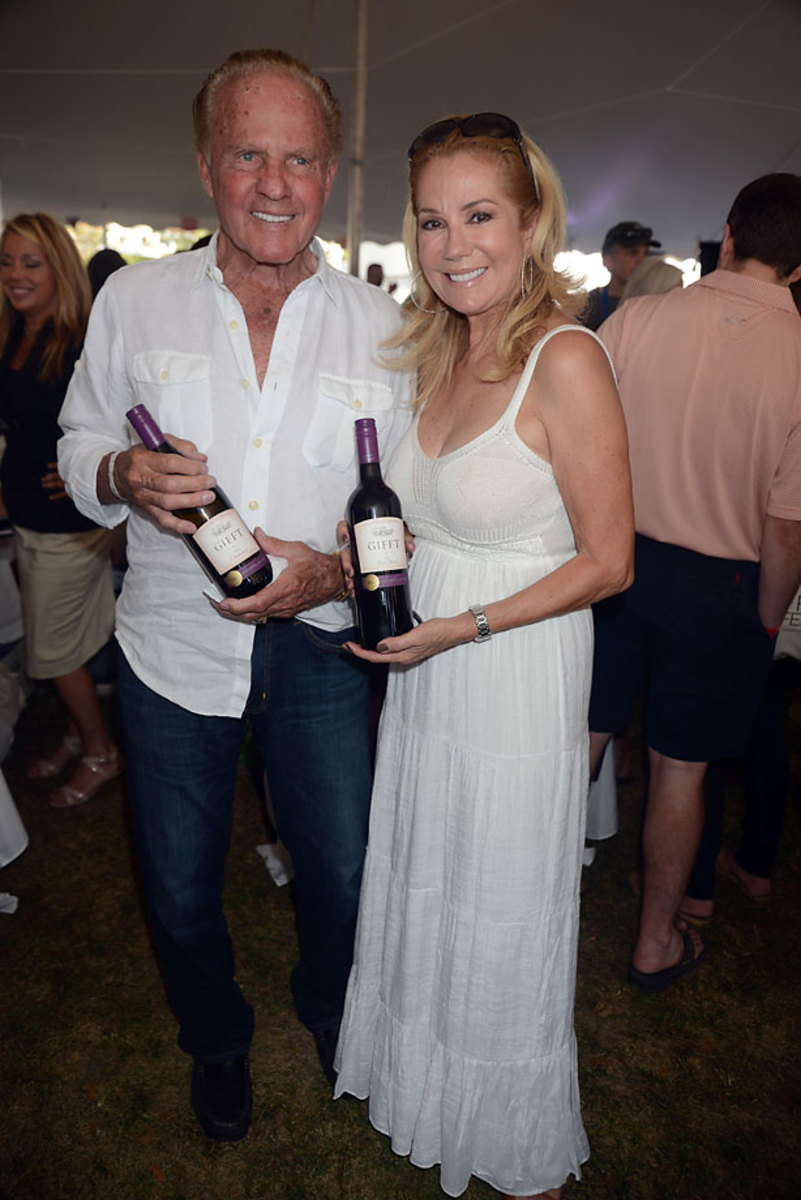
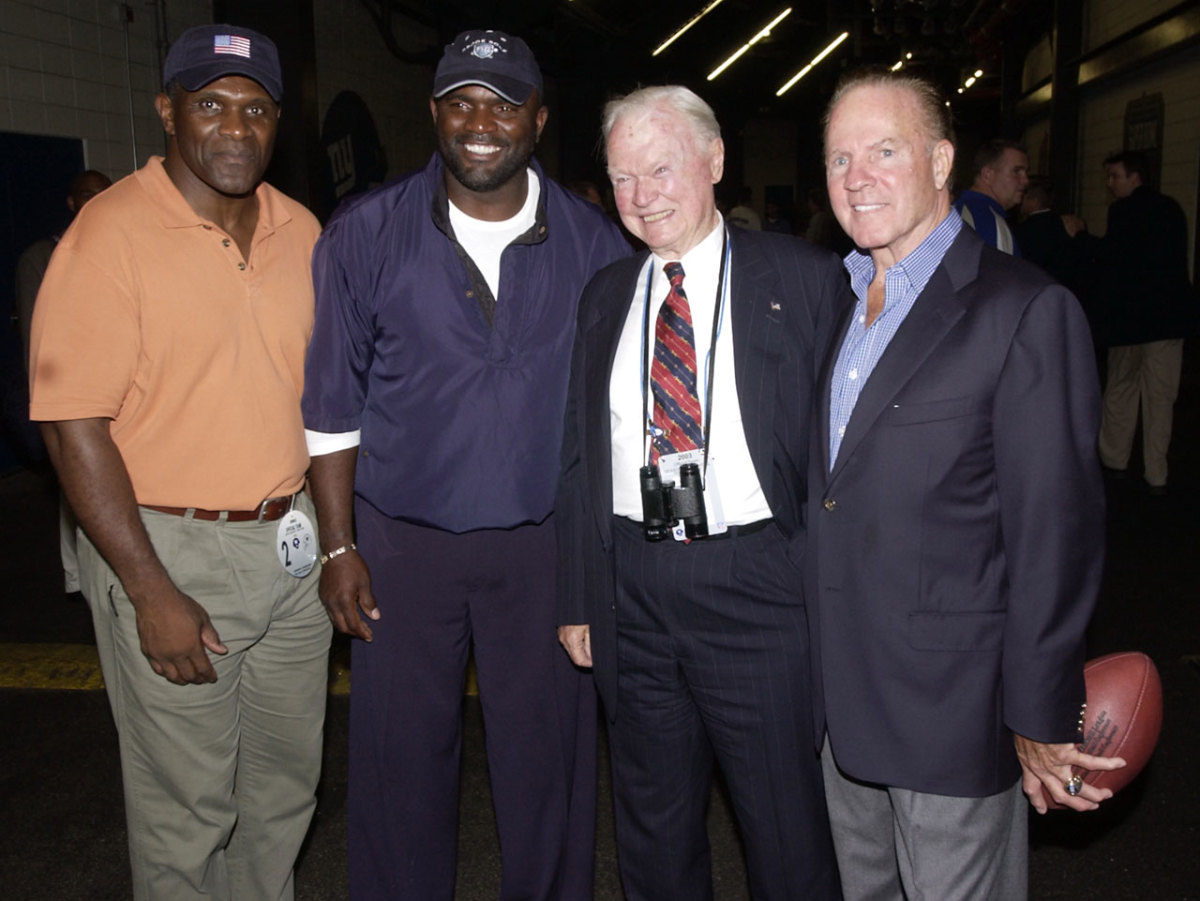
Harry Carson, Lawrence Taylor, Wellington Mara and Frank Gifford at a Giants-Cowboys game in 2003.
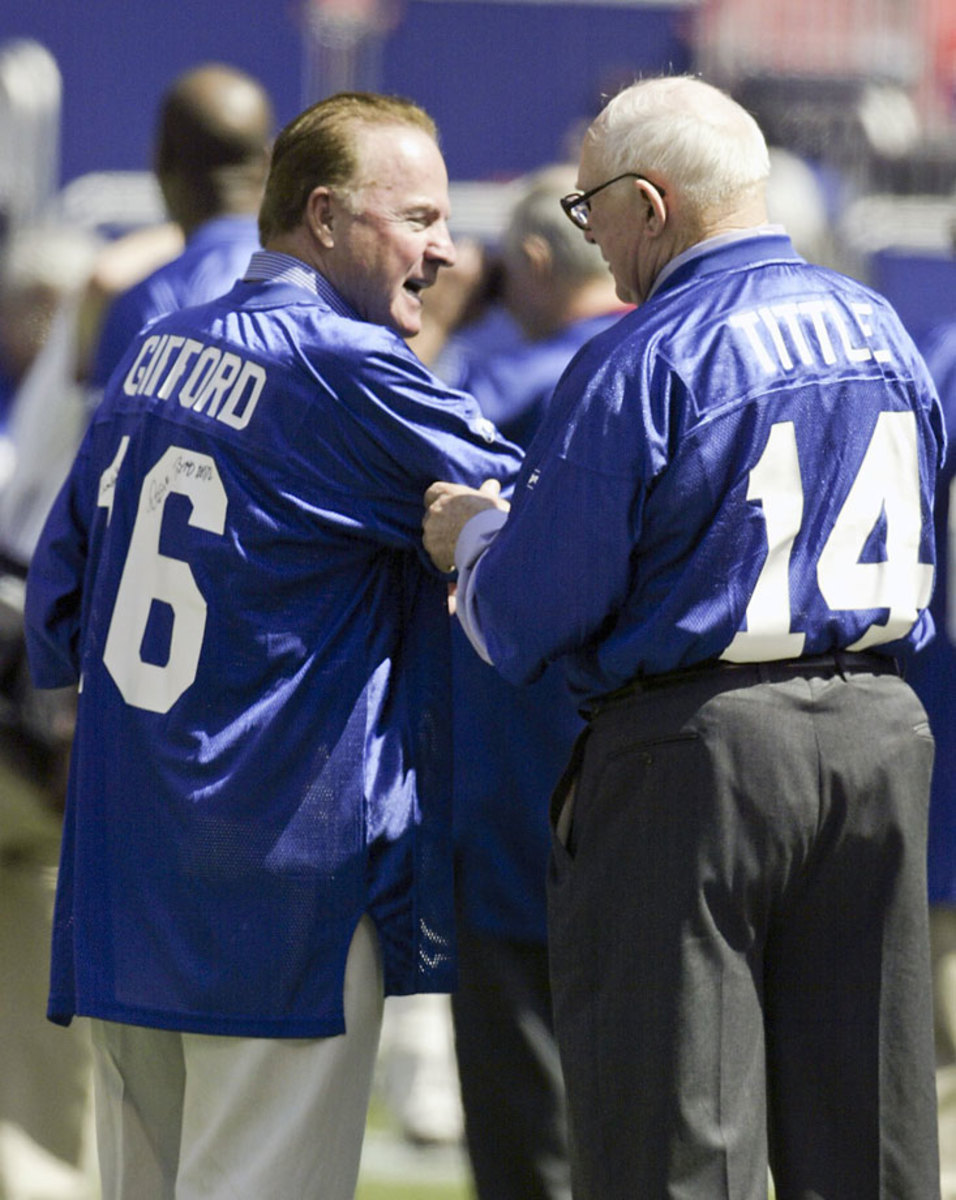
Former New York Giants Frank Gifford and Y.A. Tittle on the field before a game against the St. Louis Rams in September 2003.
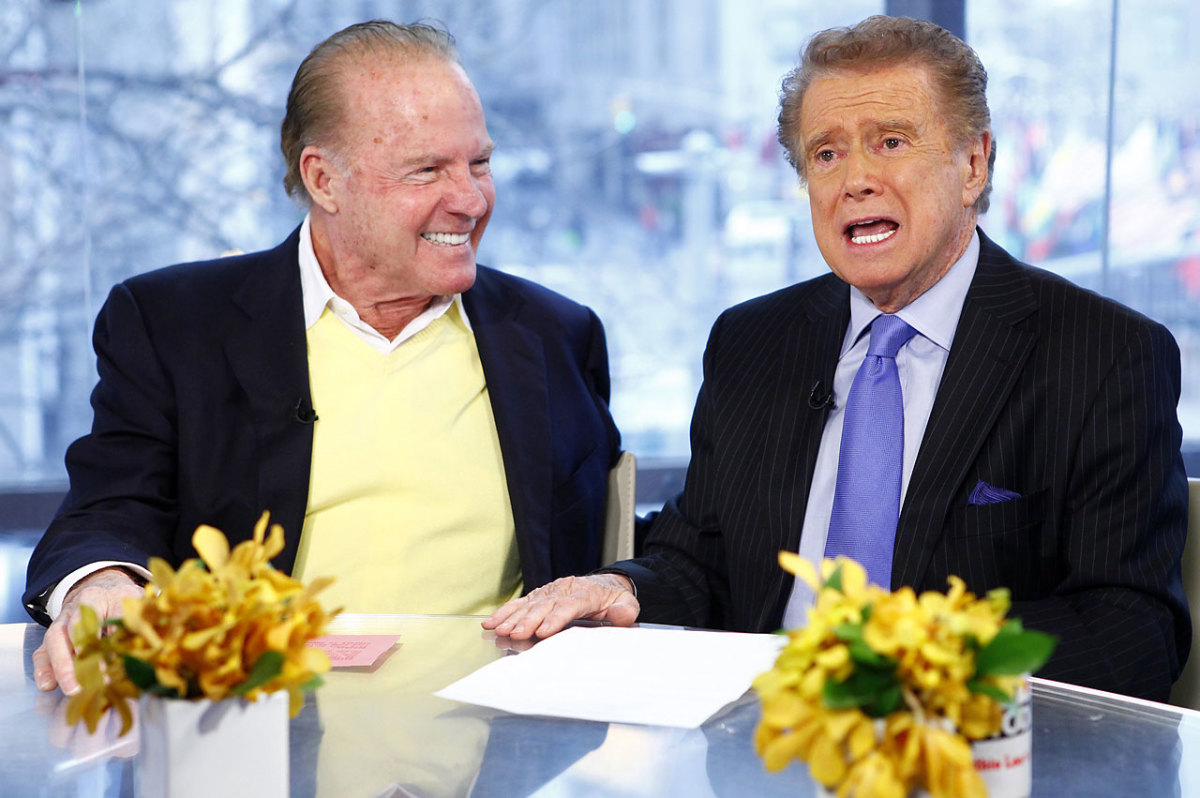
Frank Gifford and Regis Philbin appear on NBC News' "Today" show.
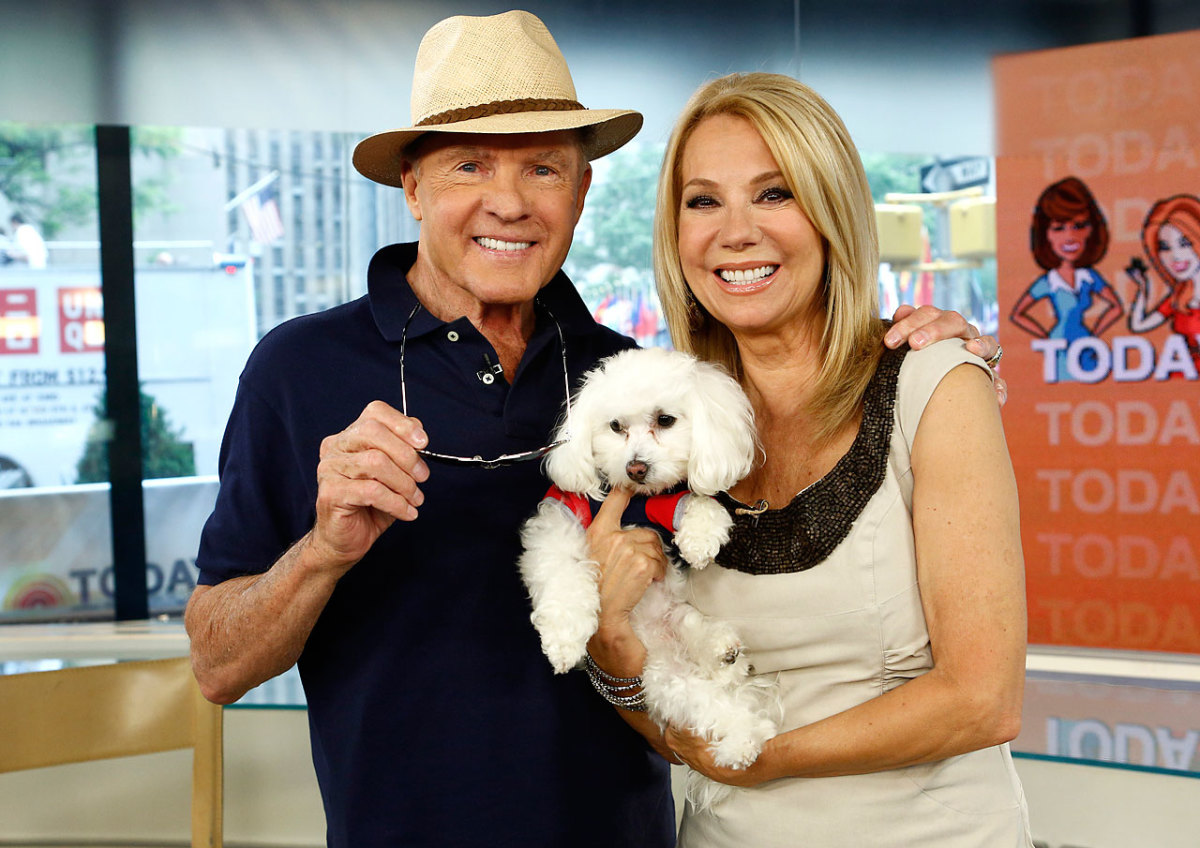
Frank and Kathie Lee Gifford appear on NBC News' "Today" show.
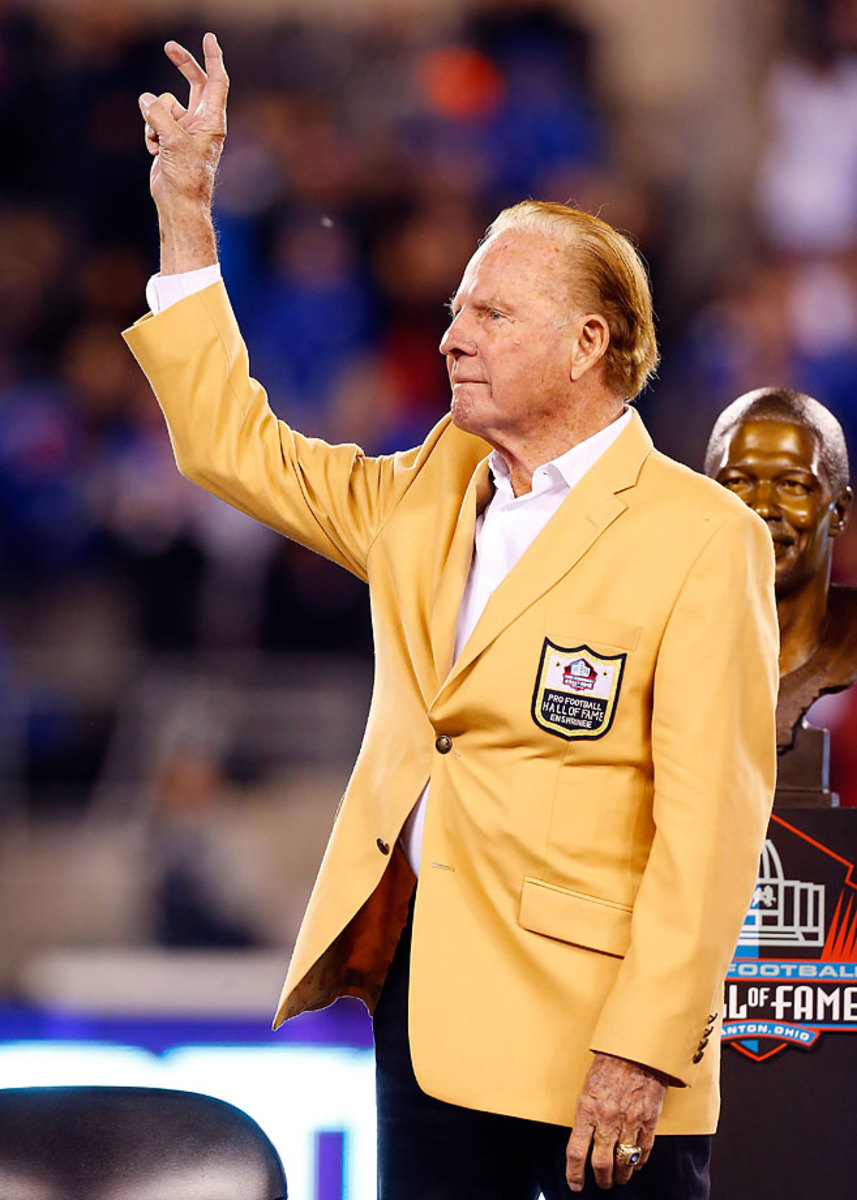
Gifford's career was abbreviated on the front end by the fact that his own team saw him more as a defensive back and on the back end by that famous hit from Eagles linebacker Chuck Bednarik that knocked him out of football for over a year, but in his prime, Gifford set the tone with a smooth running style and great elusiveness. To this day, he holds the Giants' team record for most total touchdowns scored.
• BENOIT: Giants prepared for Beckham's star to rise even higher
Proof of Gifford's long-term effect on the game can be seen first in Lombardi's first film sessions as the Packers' new head coach in 1959. The first and most important question the coach had: Where he could possibly find his new Frank Gifford? Lombardi found him in Paul Hornung, another former college star who was underused early in his professional career but had the same versatility. “You're my halfback” were the first words Lombardi ever said to Gifford and the first he ever said to Hornung. The legendary coach knew that on top of his brutally simple and effective offense, he needed one rogue factor defense couldn't quite deal with.
SI Vault: Young star Junior Seau is bringing honor to his family name
When Gifford returned to the game in 1962, 18 months after that infamous Bednarik tackle, he switched from halfback to flanker as his primary position. The adjustment was tough at first, as he told Sports Illustrated in September of that year.
“I'm as fast as I ever was,” Gifford said. “I've got better reflexes. But I'm playing a new position on the opposite side of the line from where I played before and it takes time to get used to it. Old habit holds me and running the opposite way to catch passes makes it uncomfortable, so I drop more than I used to. But I want to play as much as I ever did, and that is really the big thing.”
Gifford figured it out well enough to catch 39 passes for 796 yards and seven touchdowns in 1962, then 42 catches for 657 yards and seven touchdowns in '63. He was a key cog in those two Giants teams that went to the league championship game both years, losing first to Lombardi's Packers and then to George Halas's Bears, but the point had been made. Against long odds, Gifford once again proved his greatness and all-encompassing versatility.
He played out his final season well enough inb 1964, with 29 catches for 429 yards and three touchdowns as a receiver. Then, it was off to brighter lights and bigger things, leaving those who saw the former USC All-American on the field to wonder what might have been.
SI Vault Podcast: H.G. Bissinger talks Friday Night Lights 25 years later
What he produced in 12 seasons was impressive enough. Gifford was an eight-time Pro Bowler and four-time First-Team All-Pro, and he made the Pro Bowl at running back, receiver and defensive back.
“Every time Frank walked on a football field, he dominated without ... you never looked at him and thought he was that much better than anybody else until the game was over,” said Dan Dierdorf, Gifford's fellow Hall of Famer and longtime Monday Night Football colleague on ESPN Radio Monday morning. “Then, you looked at what he did, and he could do it in so many different ways. He was an extraordinary athlete; he really was. And he played in an era where the exposure wasn't what it is today.”
Gifford's playing career helped shift that balance of exposure. Long before he was graced by the ancillary benefits of his stardom, Gifford had built up a lifetime of equity as a pure football man, and that shouldn't be forgotten.
